Live Aid
description: a benefit concert held in 1985 to raise funds for famine relief in Ethiopia
51 results

No Such Thing as Society
by
Andy McSmith
Published 19 Nov 2010
, was played as the soundtrack to a searing video of a child weakened by hunger and struggling to stand up on thin legs. By nightfall, Live Aid had raised £30m, three times what had been expected. The worst that could be said about that extraordinary day was that most of the people in the crowd had very little idea of the scale and complexity of Africa’s problems; £30m was an astonishing sum to raise from one charitable event, but it was nowhere near enough to impact on world affairs. As a comparison, two months after Live Aid, the British government sealed an arms deal with Saudi Arabia that was worth £43 billion, or more than 1,400 Live Aid concerts. The slush fund that the British contractor BAE set aside in Swiss and Panamanian bank accounts to pay commissions, or bribes, to various middlemen involved in the arms deal is thought to have been more than three times the amount raised by Live Aid.6 Geldof, to his credit, was quick to realize that if he was to take famine relief seriously he would have to immerse himself in the politics of world trade, because all the energy and goodwill of that summer’s day hardly made a ripple on Africa’s problems.
…
The slush fund that the British contractor BAE set aside in Swiss and Panamanian bank accounts to pay commissions, or bribes, to various middlemen involved in the arms deal is thought to have been more than three times the amount raised by Live Aid.6 Geldof, to his credit, was quick to realize that if he was to take famine relief seriously he would have to immerse himself in the politics of world trade, because all the energy and goodwill of that summer’s day hardly made a ripple on Africa’s problems. Even so, Live Aid was one of the greatest displays of generosity that Britain has ever seen, and it is the single most lasting image of Britain in the 1980s – which might seem odd, because the decade is not thought of as a charitable one.
…
Where the strike was divisive, Band Aid united; everybody, whether they were for or against the miners, or undecided, could be against letting African children starve. After Live Aid, there was less overtly political rock music, as if the industry had done its bit and could go back to singing about love, sex, despair and the other staples. Many of the best bands to emerge in Britain in the decade were not invited to perform at Live Aid, either because it was before their time or, in the case of the Eurythmics, because they seemed to have passed Geldof by. Annie Lennox and Dave Stewart had used a bank loan to set up a small eight-track studio in Chalk Farm, north London, in 1982.
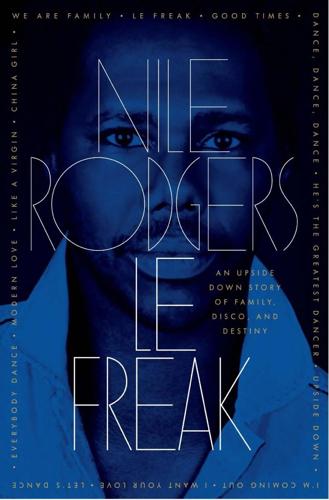
Le Freak: An Upside Down Story of Family, Disco, and Destiny
by
Nile Rodgers
Published 17 Oct 2011
With all due respect to the great poet and musician, he was wrong. In the searing summer heat of 1985, a televised event called Live Aid, a music-superstar-driven, dual-stage concert to help save Africa, became the largest pop event of all time—and I was part of the core band. Live Aid certainly felt like revolution, kind of, sort of, or at least what passed for a revolution in 1985. It was definitely a huge moment in my life—proof that everything I’d devoted my career to truly had the power to change the world. The good news for me was that Live Aid wasn’t exactly a call to arms or a demand for any personal sacrifice. Since I was now over thirty, developing a little paunch, and getting high daily on toot and common store-bought grog, it’s probably all the revolution I could handle.
…
I could only assume she must have. How long had I had the number? Since the Palladium party? Who knew? At some point during the day, I called her and we spoke about our upcoming gig—Live Aid. Despite my increasingly foggy mind, I was still in good enough shape to work all the time. My latest project was with the Thompson Twins. I was surprised by how pumped up Madonna was about the gig—she was close to obsessed. Live Aid, as most people know, was the second phase of the charity project that recorded the song “We Are the World.” Six months earlier the newly dubbed Material Girl had been snubbed from the original project, even though the “We Are the World” organizers chose participants from American Music Awards attendees, which included Madonna.
…
Eventually I’d have many occasions to question my path toward garden-variety alcoholism, but July 13 wasn’t one of them. Live Aid was the payoff for a lifetime of hard work. I was practically tripping over music legends—Led Zeppelin, Eric Clapton, Mick Jagger, Phil Collins, Lionel Richie, Joan Baez, Bob Dylan, Ashford & Simpson, Tom Petty, Hall & Oates, Teddy Pendergrass, Duran Duran, and Madonna—all gathered together like a walking collection of Rolling Stone covers. I’d admired almost every artist here since I was a teen. Now I was a peer, which was hard for me to believe. LIVE AID SHOULD HAVE REPRESENTED the highest peak in my professional life, but for some reason I kept pressing on, in search of a higher mountaintop.

Me! Me! Me!
by
Daniel Ruiz Tizon
Published 31 May 2016
Just a month later, following on from ‘Wear Purple Friday’ and ‘Bake a Cake Friday’, but just before ‘Do Something Nice Friday’, there was another World Food Day. My suspicions were confirmed. It was not official. This was coming from within. How could you have two World Food Days in the space of a couple of months, I asked my manager. It would be like Live Aid staging another Live Aid before 1985 was even out. At least Bob Geldof had the decency to wait 20 years before inflicting Chris Martin and Live 8 on the world. Having a second World Food Day so soon after the first devalued the original day, which, as my manager reminded me, I’d excused myself from in addition to refusing to turn out for the office’s mixed sex soft ball team.
…
If you can remember what you were doing the day your managers were born, I think it’s fair to say your career hasn’t gone according to plan. I didn’t find taking orders from them easy. There were days where I had to fight the urge to say, “Whoa, hold on; I remember watching Live Aid. I even posted my first love letter the morning of Live Aid about two years before your parents even met.” But it all counts for nothing. It should. But it doesn’t. After this latest miserable, nine to five experience, under the strengths and skills section on my rather gappy CV, I’m considering sticking “able to work for very young bosses”.
…
I’m not ashamed to be working class but the all too often limited ambitions and dreams of my own community, coupled with my coolness towards the middle classes because of the opportunities that come their way all too easily, have made me something of a loner. I’ve long felt I’m caught between two worlds. The one I belong to, and the one populated by the gatekeepers who decide whether my work will sell, more often than not these days, born the wrong side of Live Aid. As I’ve moved into my forties, whilst I feel I’ve managed to iron out some of the flaws that brought down my dad, in another significant way, I believe I have morphed into him. My dad, I can see now, had never really fully embraced the always-insular Spanish community in southwest London, and around this time of his life, became something of a loner.
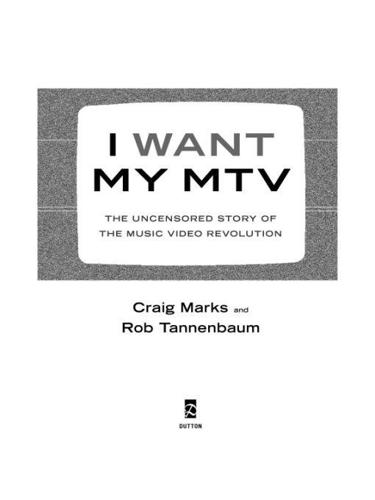
I Want My MTV: The Uncensored Story of the Music Video Revolution
by
Craig Marks
and
Rob Tannenbaum
Published 19 Sep 2011
Working relentlessly, using persuasion, negotiation, guilt, and manipulation, he organized Live Aid, a daylong concert held in London and Philadelphia on July 13, 1985, and broadcast around the world. In the U.S. Live Aid was broadcast live on ABC and MTV, whose VJs hosted the event—quite badly, almost ineptly. ABC’s audience was much larger than MTV’s, so the VJs’ inexperience was seen by millions, including TV critics who hammered the fives faces of the network. “The MTV video jockeys should hide their heads,” USA Today wrote. Live Aid raised close to $300 million, and Geldof was knighted, but the countdown began on the MTV careers of Martha Quinn, Nina Blackwood, Alan Hunter, Mark Goodman, and J.J.
…
So I talked to Garland and explained that if we made some sort of commitment to give them inventory on the air, we could get the exclusive on the video. And that led to us broadcasting the Live Aid concert. I did that deal. About six weeks before the broadcast, Gale Sparrow and I left to form a new company. CURT SMITH: We’d been touring for a year, really hard work. We had five days off and planned a holiday in Hawaii. Then Bob Geldof announced that we were playing Live Aid. He never asked us. Geldof thought he was so powerful that if he announced it, we’d have to say yes, or we’d look like bad people. I was pissed off. Whether we played or not wasn’t going to make a difference to the amount of money raised.
…
But their free programming was selling a zillion records. After the mid-’80s, MTV knew they had the power. That’s when the record companies said, “Please play our record!” instead of “Why should we give you our record?” Chapter 20 “DON’T BE A WANKER ALL YOUR LIFE” “DO THEY KNOW IT’S CHRISTMAS?,” “WE ARE THE WORLD,” AND LIVE AID BOB GELDOF LEARNED ABOUT THE DISASTROUS famine in Ethiopia while watching TV, and he resolved to raise money to feed starving Africans. Geldof was not a music star—his band, the Boomtown Rats, is remembered mostly for the crazy-assassin ballad “I Don’t Like Mondays”—but he knew England was full of pop phenoms, and he gathered them to record a song he cowrote, “Do They Know It’s Christmas?”
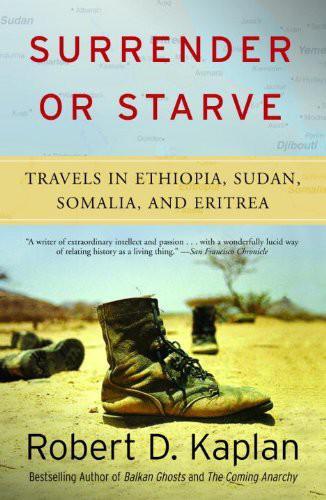
Surrender or Starve: Travels in Ethiopia, Sudan, Somalia, and Eritrea
by
Robert D. Kaplan
Published 1 Jan 1988
When a British aid worker in Khartoum told a middle-class Sudanese woman that millions of Sudanese were close to death due to a famine in the far west of the country, she exclaimed, “My God, are those khawajas going to have a crisis on their hands!” As the woman's reaction indicated, the famine was a crisis of conscience for the West only. The famine certainly wasn't a crisis for the Eastern bloc. Not a single ruble was collected for Live Aid, of which Dr. Anatoly Gromyko, head of the USSR's Africa Institute, said he never heard. (Moskovskii Komsomolets, a widely read Soviet youth publication, described Live Aid as a “tele-cosmic concert” on behalf of peace; the paper never mentioned the word famine.) But from interviews I conducted in fall 1985 and spring 1986, it became clear to me that the famine did not prick the conscience of many Africans who were not starving.
…
Keating, Robert. (July 1986). Spin “Live Aid: The Terrible Truth.” Keating, Robert. (September 1986). Spin “Sympathy for the Devil.” Legum, Colin. May 20, 1986. International Herald Tribune, “Ethiopia: A Regime of Torture.” Matthews, Christopher J. January 21, 1985. The New Republic, “The Road to Korem.” May, Clifford D. September 29, 1985. The New York Times, “War Rivals Drought in Africa's Hunger Crisis.” Merritt, Giles. October 1985 International Herald Tribune, “Americans May be Hooked on Africa.” Owen, Richard. July 23,1985. The Times, “No Roubles in the Live Aid Fund.” Puddington, Arch. (April 1986).
…
Villagization went on unabated and thereby paved the road to the next famine by uprooting the way of life of the country's most successful group of farmers. In 1987, foreign donors were helping to make up cereal deficits in twenty-two of thirty-nine regions of Hararghe, which prior to villagization traditionally had registered surpluses. Thus, large amounts of Western aid were subsidizing communism, albeit indirectly, while charities such as Live Aid were serving to buttress a ruling elite that had destroyed the lives of more of its own people than had any other government in this decade, with the sole exception of Iran's, and that consistently had refused to negotiate a truce in a war that killed hundreds of thousands. Clay's frequent assertion that Western aid in the long run could kill more people than it saved in the short run was neither farfetched nor unfair.
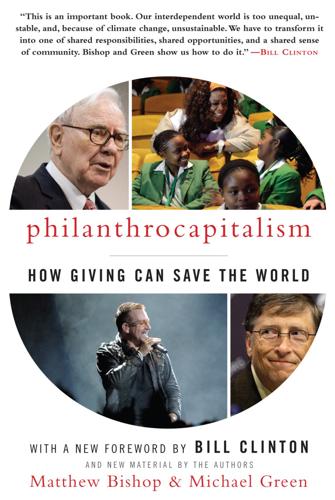
Philanthrocapitalism
by
Matthew Bishop
,
Michael Green
and
Bill Clinton
Published 29 Sep 2008
Its roots extend back to the Band Aid record of 1984 and Live Aid concert of 1985, organized by Irish rock musician Bob Geldof and featuring Bono. As well as raising lots of money, these had generated massive publicity about the problems of developing countries and turned a generation into activists. A newly elected backbench MP called Tony Blair founded the Band Aid cross-party Parliamentary committee. Eventually, encouraged by British activist Jamie Drumond, Bono and Geldof became involved in another campaign, Jubilee 2000, built on the fact that the interest owed by Ethiopia each year on its debt dwarfed the money raised by Live Aid—and that many other poor countries were in a similar position.
…
This particular evening, in September 2007, the Colombian pop star is singing her latest hit, “Hips Don’t Lie,” at a debate-cum-party, screened live on MTV, at the end of the annual meeting of the Clinton Global Initiative (CGI). Since the former president, now as much a celebrity as a politician, first held this annual giving fest in 2005, it has become a must-attend event for philanthrocapitalists eager for recognition at what the Economist has christened “the Philanthropy Oscars.” At least since the Live Aid concert in 1985, celebrities and philanthropy have become ever more entwined. Now, movie and rock star “celanthropists” are serious partners with the superrich. Rock star and activist Bono and Bill Gates—who, with Melinda Gates were named Time magazine’s “People of the Year” in 2005—have “had a common cause” ever since their first meeting in New York in 2002, says Gates: “He’s been great.”
…
Around the same time, Arlo Guthrie performed benefit concerts for Chilean freedom fighters, and Brigitte Bardot campaigned to protect seals. In 1971, George Harrison of the Beatles organized the pioneering awareness and fundraising Concert for Bangladesh, then in the grip of famine. This was the precursor of the Live Aid concert in 1985, which raised over $140 million for the people of Ethiopia and inspired a whole generation of celebrity activists, not least Bono. Today, the number of celanthropists, and the seriousness with which they approach their good work, is unprecedented. Angelina Jolie has scaled up her philanthropy over time, starting in 2001, when she gave $1 million to help Afghan refugees.
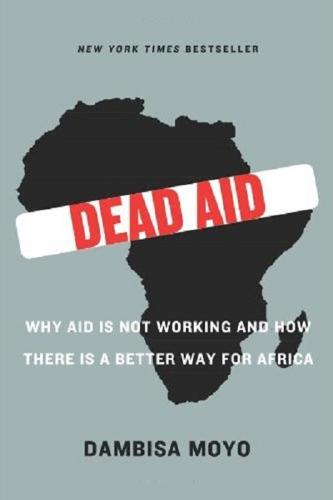
Dead Aid: Why Aid Is Not Working and How There Is a Better Way for Africa
by
Dambisa Moyo
Published 17 Mar 2009
The Nigerian humanitarian catastrophe of Biafra in 1971 (the same year as the Beatle George Harrison’s Concert for Bangladesh) had demanded that the world respond to human catastrophe. Consciousness was raised several notches with Bob Geldof’s 13 July 1985 Live Aid Concert where, with 1.5 billion people watching, public discourse became a public disco. Live Aid had not only been triumphant in bringing Africa’s plight to the wider public; it also trumpeted an era of morality. In the run-up to the new millennium, crusades like the Jubilee Debt Campaign capitalized on people’s desperate desire to be a part of something that would give aid and development policy another dimension.
…
D. 46 Heavily Indebted Poorest Country debt relief programme (HIPC) 53 HIV–AIDS pandemic 4–5, 7, 71–2 Hu Jintao 104, 108 Human Development Report (1994) 52 Hungary 85–6 IMF (International Monetary Fund) aid warning 47 appointment of Irwin Blumenthal 53 debt crisis 18–19 and foreign capital 63 inception 11–13 and Malawi 55–6 and ‘nit-picking’ 108–9 Structural Adjustment Facilities 21 In Search of Prosperity (Rodrik) 34 India 112, 117, 123, 132, 134, 137–8 India–Africa Forum 112, 123 Indonesia 34, 56 Industrial and Commercial Bank (China) 106 inflation 61–5 innovation 139–40 International Bank for Reconstruction and Development see World Bank International Development Association (IDA) 37–8 International Development and Food Assistance Act (US 1975) 16 International Peace Research Institute (Stockholm) 59 International Remittance Network 136 International Trade Organization 11 investment bonds 77–83, 87–96 borrowing costs 84–5 credit ratings 78, 83, 87–8 emerging markets 79–81, 85 portfolio diversification 80–82 Ireland 37, 125 Israel 134 Italy 125 Ivory Coast 109–10 Jamaica 136 Japan 99, 102–3, 112, 125 Johannesburg Stock Exchange 4 John Paul II, Pope 26 joint liability 129 Jubilee Debt Campaign 26 Kagame, President Paul 27–8, 148–9 Kanbur, Ravi 54 Kariba dam 15 Kenya and EBA 118 and exports 62 favourable view of China 109 fragile democracy 72 HIV prevalence rates 3 and long-term debt 87–8 money transfer systems 136 population 124 and rampant corruption 48 stake in the economy 152 trade-oriented commodity-driven economy 146 turbulent elections 2008 33 Keynes, John Maynard 11 Kibaki, Mwai 33 Kiva 130 Kurtzman, Joel 51 Lambsdorff, Graf 51 Landes, David 33–4, 147 least-developed countries (LDC) 123 Lensink, R. 136 Lesotho 118 life expectancy 5 Lin Yifu, Justin 153 Live Aid 26 Lumumba, Patrice 14 Lundin, Lukas 98 M-Pesa (money transfer system) 136 Mahajan, Vijay 132 McLiesh, Caralee 101 McNamara, Robert 16, 17 maize scandal (Malawi) 56 Malawi 55–6, 106, 117, 145 Mali 71–2, 94, 109–10, 116 Maren, Michael 60 Markit (data/index firm) 91 Marshall, George C. 12 Marshall Plan 12–13, 35–8 Mauritania 120 Mauritius 34, 89 Maystadt, Philippe 107 Mengistu Haile Mariam 14, 23 Mexico 18, 82, 84, 117, 132, 144, 151 micro-finance 126–32, 140 middle class 57–8 Millennium Challenge Corporation aid campaign (US) 40, 56 Millennium Development Goals (MDG) 45, 96–7 Mkapa, President Benjamin 26 Mobutu Sese Seko, President 14, 22–3, 48, 53, 108 Monterrey Consensus 2002 74 Moody’s Investors Service 83 morality 150 ‘More Aid for the Poorest’ (UK white paper) 16 mosquito net producer (example) 44–5, 114, 122, 130–31 Mozambique 117, 134 Mugabe, Grace 146 Mugabe, Robert 108, 146–7 Mwanawasa, President Levy 53 Mystery of Capital, The (de Soto) 137–8 Na’m, Moisés 107 Namibia 89, 93 ‘negative corruption’ 57; see also corruption Netherlands 63 New York City 151; see also United States New Zealand 121 Nicaragua 151 Nigeria and AGOA duty-free benefits 118 aid from World Bank 107–8 assets looted 48 banking sector 4 beneficiary of FDI 105 and the bond index 92 and corruption 23 cotton revenues 116 favourable view of China 109 humanitarian catastrophe 26 independence 71 and long-term credit ratings 88 Maiduguri money find 137 many tribes 32 natural-gas reserves development 112 rebuilding colonial-era railway 106 remittances 133 ‘No Donor Money, No Loans’ policy 128 North, Douglass 41 Norway 73 ODA (official aid) 25 Odinga, Raila 33 oil 17–18, 48–9, 82, 105–6, 108–9, 120 oil crisis 1979 17–18 Olson, Mancur 41 Olympics 2008 108 Organization of Economic Cooperation and Development (OECD) 115 Oxfam 117 Pakistan 34, 124 Pan-African Infrastructure Development Fund (PAIDF) 95 Paris Club of creditors 108 PEPFAR (AIDS Relief) 7 Peru 151 Peters Projection Map 121 Pew Report 2007 109 Philippines, the 135 PIMCO (bond investment organization) 91 Poland 8–6 Ponzi schemes 130 ‘positive’ corruption 56, 59; see also corruption Private Equity investments 4–5 programme aid 21 Protestantism 31 Przeworski, Adam 43 Raiffeisen, Friedrich 131 Rajan, Raghuram G. 142 Ramalho, Rita 101 Ramesh, Jairam 123 Reagan, Ronald 20, 22 Reichel, R. 46 remittances 133–6 Resource Flows to Africa (UN) 133 Revolutionary United Front (Sierra Leone) 59 Rodrik, Dani 34 Rosenstein-Rodan, Paul 39 Ruiz-Arranz, Marta 136 Russia 84, 87, 112 Rwanda 27, 32, 148 Sachs, Jeffrey 96–7 Sani Abacha, President 48 São Tomé and Principe 106 savings 137–40 Schulze-Delitzsch, Herman 131 Scottish Banks 139–40 Second Conference of Chinese and African Entrepreneurs 114 securitization 96 Sen, Amartya 42 Senegal 109–10 Short, Clare 56 Sierra Leone 59 Singapore 152 Singh, Manmohan 123 small/medium enterprises (SMEs) 125 social capital 58–9 Somalia 60, 118, 133 South Africa abandoning foreign aid 144 and AGOA duty-free benefits 118 and bond issues 89, 92–3 and credit league tables 82 1997 stock market fall 84 not reliant on aid 150 and PAIDF 95 remittances 133 setting an example 78 South Korea 45, 82, 87 Sovereign Wealth Funds 112 Spain 86 Spatafora, N. 133 stabilization programme 20 Standard & Poor’s rating agency 83, 87–8 Standard Bank 106 sterilization 64–5 stock market liquidity 4 Structural Adjustment Facilities 20–21 Subramanian, Arvind 142 subsidies 115–16 Sudan 105–6, 108, 120 sugar production 116–17 Svensson, J. 39, 52 Swaziland 5, 106 Sweden 73 Tanzam Railway 103–4 Tanzania 26, 56, 97, 103–4, 110, 124, 131 taxation 52, 66 Thailand 57 Thatcher, Margaret 20, 67 Togo 94, 116 Tokyo International Conference on African Development 112 Toxopeus, H. 136 trade 17, 19–21, 38–40, 62, 64, 112, 114, 117–24 Transparency International 51, 56, 71 Turkey 93, 112, 117 Uganda aid-fuelled corruption 53 and bonds 65, 97 favourable view of China 109 and HIV–AIDS 71 improved economic growth 101 plunderers and despots 108 population 124 remittances 134 trade-oriented commodity-driven economy 146 UN Conference on Trade and Development (UNCTAD) 102 United Kingdom 108, 120 United Nations Development Programme (UNDP) 25 United Nations Human Development Report 5 United States and African Growth and Opportunity Act 118 aid history 12–17, 40 bond comparisons 80 diplomatic ties with Zimbabwe 108 Energy Information Administration 103 Food For Peace budget 45 freer trade access for African countries 149 influence compared to China 109–10 and Malawi 56 public’s desire on aid 74 Soft Banks 139 and subsidies 115–16 trading partner status 119 2006 foreign aid 99–100 US Farm Security and Rural Investment Act 2005 115 USSR 14, 19, 24 Venezuela 86 venture capital (VC) 139 Wade, President Abdoulaye 149 Washington Consensus 21–2 Wealth and Poverty of Nations, The (Landes) 33–4, 147 Weber, Max 31 Weder, Beatrice 52 Wen Jibao 104, 114 West African Economic and Monetary Union 88 What makes Democracies endure?
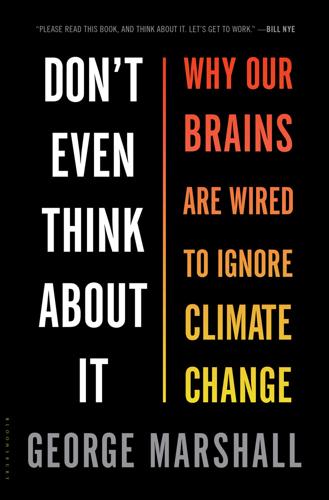
Don't Even Think About It: Why Our Brains Are Wired to Ignore Climate Change
by
George Marshall
Published 18 Aug 2014
One day it will make sense? Previous global events like Live Aid and Live 8, which Wall also organized, had made eminently good sense at the time. They had focused on bringing attention to issues that already had proximity: starvation in Ethiopia and debt alleviation. But Live Earth was building awareness for an issue that was still distant to most people. Wall was “very disappointed” by the lack of follow-up on the momentum he had created, complaining that environmentalists had “done a lousy job of working together.” Bob Geldof, organizer of the original Live Aid concert, had already warned that the absence of concrete measures meant that Live Earth would “just be an enormous pop concert.”
…
Her song, even if not that jumpable, started off upbeat and hopeful: “Hey you, don’t you give up / it’s not so bad / there’s still a chance for us,” before turning to a more naked self-interest in the second verse: “Hey you, save yourself / don’t rely on anyone else / first love yourself.” It was an unfortunate echo of the Live Aid anthem of a generation earlier to raise money for the starving Ethiopians, which had contained the killer line: “Tonight thank God it’s them instead of you.” It was the images that ran on the video screens behind Madonna that grounded this firmly in the environmentalist version of climate change: smokestacks, traffic jams, flooding, hurricanes, starving dark-skinned children, chickens on conveyor belts, polar bears on icebergs, burning rainforest, melting glaciers, oil rigs, Martin Luther King Jr.
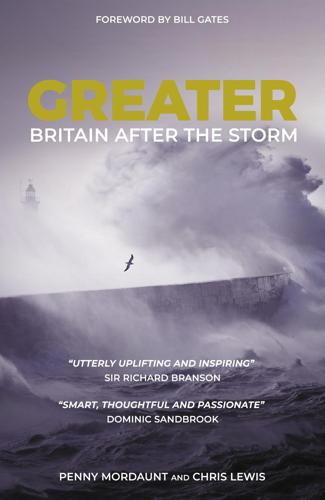
Greater: Britain After the Storm
by
Penny Mordaunt
and
Chris Lewis
Published 19 May 2021
If the country wants a modern, aspirant and representative economy, then it needs to understand that equality, aspiration and economic growth feed off each other. A positive attitude towards repeated failure is the secret to success. This is the substance of Chapter 8, which explores our enduring concept of mutuality. Britain is the nation of Wilberforce, Leonard Cheshire and the NHS. It was the cradle of the anti-slavery movement, the Paralympics and Live Aid. The sense of duty that drives us towards each other is at the heart of Britain. The concept of different people working towards a unified goal is the foundation of the United Kingdom, and we should never forget it. This is not just about gender, ethnicity, disability or class background. Our NHS is about equality of health.
…
For many others this was Britain’s key quality: ‘When you travel around the world, you realise that it’s the combination of the democratic traditions, culture and respect for fairness and justice that most characterises Great Britain.’ As evidence for this, panel members cited the actions of the British people as least as much as they talked about government policies: ‘the Live Aid concert, the actions to free Nelson Mandela and the Make Poverty History campaign’ and more. One panellist said, ‘It’s remarkable that in the historical records of social change it is the legislative and political parties’ role that is emphasised. The public agitation is ignored and yet this was often the most crucial part of the social changes that occurred.’
…
By focusing solely on our own needs, we are directed inwards, but St Augustine pointed out that at the heart of man there existed a ‘God-shaped hole’, a desire for fulfilment that no amount of money, food, sex and drugs could ever fill. If we were to go looking for true leaders, they would not be those acting for personal gain; they would be those acting in service. Why does Britain have so many charities? Is it compassion? Empathy? Guilt, even? What was it that motivated Sir Bob Geldof to found Live Aid? The cynical mind might accuse him of career opportunism, but that would not have sustained such an enterprise. The notion that artists in a notoriously competitive and cut-throat industry would cooperate was ridiculed. But it worked. It was a big idea and it grew bigger. The resulting concerts raised £150 million for those in need in Ethiopia.28 This sort of cause unifies; it brings people together for a higher reason; it motivates and it removes division.
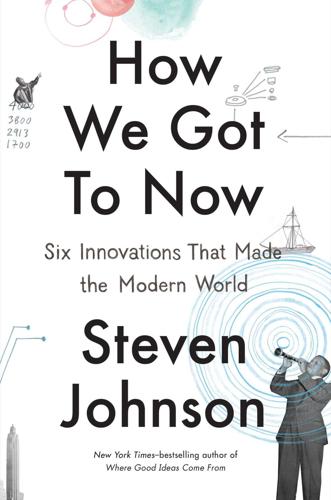
How We Got to Now: Six Innovations That Made the Modern World
by
Steven Johnson
Published 28 Sep 2014
Remove the microphone and amplifier from the toolbox of twentieth-century technology and you remove one of that century’s defining forms of political organization, from Nuremberg to “I Have a Dream.” Tube amplification enabled the musical equivalent of political rallies as well: the Beatles playing Shea Stadium, Woodstock, Live Aid. But the idiosyncrasies of vacuum-tube technology also had a more subtle effect on twentieth-century music—making it not just loud but also making it noisy. It is hard for those of us who have lived in the postindustrial world our entire lives to understand just how much a shock the sound of industrialization was to human ears a century or two ago.
…
B., 103 Claude, Georges, 226–28, 230, 231 Clean rooms, 159, 159–61 Clocks, 166–68 atomic, 186–88 digital, 42 pendulum, 6, 170, 171, 176, 184, 185 Clorox bleach, 151, 153 Coevolution, 4, 22 Columbia Railroad, 180, 182 Columbia University, 66, 186 Columbus, Christopher, 168 Comets, 43 Computers, 29–30, 38–39, 42, 100, 158, 161, 236, 254 Bell Labs and, 102, 108 graphic interfaces of, 65 for inventory management, 234 nineteenth-century precursor of, 245–46, 248, 249, 250, 252 time measurement and, 185, 192 waveforms converted to sound by, 96 See also Microchips; Microprocessors Congress, U.S., 6 Constantinople, fall of, 10, 14, 17 Contested Waters (Wiltse), 149 Copernican universe, 186 Corning Glassworks, 30 Cotton Club (Harlem), 110, 118 Craigslist, 7 Cretaceous age, 3 Crystals, 190 ice, 19, 70 quartz, 19, 184–86 silicon dioxide, 13 (see also Glass) Cuba, 210–11 Curie, Jacques, 184 Curie, Marie, 190 Curie, Pierre, 184, 190 Cutler, David, 148 Daguerreotypes, 217 Dark Ages, 198 Darwin, Charles, 4, 253 Darwinism, 3 Davy, Humphry, 206 Decibels, 114–15 De Forest, Lee, 106–8, 109, 110, 113, 116, 117 De Landa, Manuel, 1–2 Democratic Party, 81–83 De Moleyns, Frederick, 20 Dennison, Aaron, 176, 177, 178, 180, 181 Descartes, René, 41 Dialectical materialism, 40 Dickens, Charles, 138, 175, 220 Disease, 62, 129, 134, 154, 211 bathing seen as cause of, 137 Civil War deaths from, 143 germ theory of, 136, 140, 142, 152, 156, 158 waterborne, 148 (see also Cholera) Draggoo, Vaughn, 237 Dreiser, Theodor, 60 Dubai, 83 Dürer, Albrecht, 31, 35 DVDs, 7 Dynamics, 166, 184 Dysentery, 129, 143 Eastern time zone, 183 Edgartown (Massachusetts), 202 Edison, Thomas Alva, 9, 100, 149, 207 development of lightbulb by, 206, 208–12, 213, 215, 218, 250 phonograph invented by, 92, 97, 252 Edison Electric Light Company, 212 Egypt, ancient, 14, 164, 199, 216–17 Einstein, Albert, 189 Ekirch, Roger, 200 Elizabeth I, Queen of England, 138 Elevators, 99, 100 Epidemics, 129, 140, 143, 154 Ellington, Duke, 110, 111, 112, 118 England, 48, 138, 170, 217 Greenwich Mean Time in, 182 industrial revolution in, 172–74 Longitude Prize in, 168 in World War I, 120 See also London Enlightenment, 90 Eno, Brian, 192 Erie Canal, 60 Essex (ship), 202 Etruscans, ancient, 165 Evolution, 2–5, 22, 40, 42 Eyeglasses, see Spectacles Factories, 61, 151, 158, 174 artificial light in, 200, 224 for neon lights, 230 time measurement and, 185 See also Mills Fahrenheit scale, 65 Favelas, 129, 154 Favorite (ship), 49, 54 Feaster, Patrick, 96 Federal-Aid Highway Act (1956), 6 Fessenden, Reginald, 119–20, 121, 122 Feynman, Richard, 9–10 Fiberglass, 29, 31 Fiber-optic cables, 30, 143 Fielding, Henry, 241 Fisheries Association, 72 Fitzgerald, Ella, 112 Five Points (Manhattan), 220, 223, 225 Flash Gordon (comic strip, movies and television series), 232, 234 Flatiron Building (New York), 100 Fletcher, Henry, 114 Florence Baptistry, 32 Florida, 80, 83 Ford, Henry, 74, 149 Ford Motor Company, Rouge Plant, 175 Fossil fuels, 42, 54, 203–4 France, 67, 87–88, 90, 118, 137, 217, 228 See also Paris Franchise businesses, 228, 230 Franklin, Benjamin, 201–2 Frigidaire, 76 Frozen food, 72, 73, 74–76, 75, 84 naturally occurring, in Labrador, 68, 70, 71, 253 Fuller, George Warren, 144 Gaedicke, Johannes, 218, 225 Galileo Galilei, 10, 25, 38 pendulum clock invented by, 164–66, 168, 169, 170, 171, 184, 190, 194 García Márquez, Gabriel, 50 Gardiner, Robert, 48 Gaslight, 106, 203, 217 Gates, Bill and Melinda, Foundation, 156, 157 General Conference on Weights and Measures (Paris, 1967), 163–64, 187 General Electric, 69 General Foods, 74 General Seafood, 74 Geochemistry, 43 Georgia, 67 Germany, 104, 120, 218 Germ theory, 136, 140, 142, 152, 156, 158 Gertner, Jon, 100, 232 Giovannoni, David, 96 Glasses, see Spectacles Glassmaking, 14, 17–19, 42, 184 See also Lenses; Mirrors; Silicon dioxide Global trade, 46, 60, 170, 172 Google, 7, 174, 250 Gorrie, John, 62, 63, 65–66 Gould, Gordon, 232 GPS (Global Positioning System), 189 Great Pyramid of Giza, 216–17 Greenwich Mean Time (GMT), 182, 183 Gutenberg, Johannes, 4, 6, 20, 22, 25, 32 Half-life, 190 Hamburg, 127 Hard Times (Dickens), 175 Harper’s Weekly, 220 Harvard University, 148, 198 Havana, 46, 48, 53 Hawaii, 37–40, 39 Heisenberg, Werner, 186 Hendrix, Jimi, 115 Hennessey, Meagan, 96 Hillis, Danny, 192 Hitler, Adolf, 114 Holiday, Billie, 112 Hollywood, 150 Homo sapiens, 191 evolution of, 40 Hooke, Robert, 22–23, illustration by, 24 microscope designed by, 26 Hoover Dam, 228 Houston, 80 How Congress Evolves (Polsby), 81 How the Other Half Lives (Riis), 223 Hughes Aircraft, 232 Hurricanes, 62 Hussey, Captain, 201 Hutchinson, Benjamin, 58 Hygiene, 137, 161 See also Bathing; Public health Ice Age, 60 “Ice House Diary” (Tudor), 48–49 Ice trade, 45–46, 48–57, 61–62, 84–85, 167, 253 climate and disruptions of, 57, 62, 65 failure of early attempts at, 49–52 Idea Factory, The (Gertner), 100 Immigrants, 58, 224 to warmer climates, air-conditioning and, 80, 83 India, 53, 55 Indiana, 180 Industrial revolution, 6, 42, 61, 170, 172–75 Infant mortality, 148, 152 Innovation, “genius” theory of, 205 Instagram, 31 Internet, 30, 112, 134 Inuits, 68, 70, 74, 253 iPod, 205, 210 Irvin Theatre, 81 Italy, 20, 37 iTunes, 250 Jack the Ripper, 134 Jacquard loom, 2 Jakarta, 83 Janssen, Hans, 22 Janssen, Zacharias, 22, 24 Japan, 36, 211 Jazz, 8, 110, 112–13 Jersey City, water supply of, 143–46, 150, 156, 158 Jobs, Steve, 209, 254 Jungle, The (Sinclair), 134–35 Jupiter, moons of, 25 Justice Department, U.S., 102 Karachi, 83 Kauffman, Stuart, 64 Keck Observatory, 38–40, 39, 89 Kelly, Kevin, 192–93 Kentucky Fried Chicken, 228 Kerosene lamps, 200, 203, 205 Khufu, 216 King, Martin Luther, Jr., 112–13 “I Have a Dream” speech, 114, 231 Koch, Robert, 141–42 Kramers, Jan, 43 Kruesi, John, 211 Labrador, 68, 70, 71, 72, 253 Lagos, 83 Lancet, The, 140 Lasers, 30, 38–39, 100, 158, 232–37 Las Vegas, 226, 227, 228–31 Latitude, 168 Lawrence Livermore Labs, 235 Leal, John, 142–46, 148, 150, 151, 154, 156, 158, 160 Learning from Las Vegas (Brown and Venturi), 230, 231 LEDs, 205, 250 Led Zeppelin, 115 Lenses, 2, 6, 8, 10, 30, 31, 41, 156, 251 camera, 25, 27, 42 lasers and, 235 microscope, 22–24, 34, 141–42 of spectacles, 2, 4, 20, 22, 27 telescope, 24–25, 34, 38 Leonardo da Vinci, 31, 34, 252 Libyan Desert, 13–14, 43 “Lightbulb moments,” 72, 198 Lightbulbs, 2, 8, 41, 103, 198, 200–201, 205–15, 218, 228 fluorescent, 200, 205 lasers and, 232–33 LED, 205, 250 neon, see Neon lights Lighthouses, 118 Limelight, 217, 225 Lippershey, Hans, 25, 38 Listerine, 151, 152 Live Aid, 114 Liverpool, 110 London, 83, 104, 127, 134, 138, 152, 154, 181, 241, 246 cholera in, 140, 141, 147 Clockmakers’ Museum in, 173 underground in, 133, 135 Longitude, 168, 172 Long Now Foundation, 192–93 Clock of, 192, 193 Los Angeles, South Central, 110 Louis XIII, King of France, 138 Louisiana, 67 Lovelace, Augusta Ada Byron, Countess of, 241–42, 243, 244–46, 248, 250–52, 255 Lovelace, William King, Earl of 241–42 MacFarlane, Alan, 34, 36 Macintosh computers, 254 Madagascar (ship), 45 Madras, 55 Magna Carta, 2 Malaria, 62 Manila, 83 Marconi, Guglielmo, 106 Mariana, Queen of Spain, 32 Marrison, W.
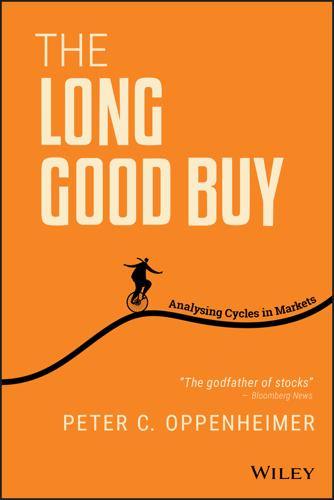
The Long Good Buy: Analysing Cycles in Markets
by
Peter Oppenheimer
Published 3 May 2020
This issue has since taken on far greater dominance and is becoming central to policy and politics, particularly in Europe, where legal commitments to decarbonisation may, in part, change the nature and structure of our economies in the years to come. The wave of new technologies in this period facilitated many other social changes in the mid-1980s when I entered the workforce. In July 1985, just before my first job started, the Live Aid concert had taken place, staged both in London's Wembley stadium and the JFK stadium in Philadelphia. New communications technology meant that, for the first time, a concert could be beamed around the world in real time. Using 13 satellites, the live concert reached a global audience of over one billion people in 110 countries; it was a triumph of both organisation and technology.3 There were, of course, strong elements of the past that featured in the concert: when Bob Dylan sang ‘Blowin’ in the Wind' together with Rolling Stones members Keith Richards and Ronnie Wood, it could have been Woodstock 16 years earlier, but the sheer technological scale of this endeavour made it feel like a new world; perhaps Dylan's ‘The Times They Are a Changin’ ’ might have been more appropriate.
…
Index 100 year bond 34 1920s, United States 148, 154, 157, 160 1945-1968, post-war boom 129–131 1960s ‘Nifty Fifty’ 114, 130–131, 233, 235 structural bear market 130 1970s Dow Jones 131 equity cycle 56 oil crisis 108 1980s bull markets 131–133 Dow Jones 15–16, 131–132 equity cycle 56–57 Japan 114, 148–149, 155–156, 158, 160–161, 162, 164 technology 12–15 1990s 16–17 Asia crisis 108, 133 equity cycle 57 S&P concentration 114 technology bubble 33, 93–94, 149–150, 156–157, 158–159, 161, 164 2000-2007 equity cycle 57 2007-2009 financial crisis 169–174 emerging markets 171–173 forecasting 19–21 growth vs. value company effects 94–96 impact 169–170 phases 171–174 quantitative easing 173–174, 178–179 sovereign debt 170, 171–173 structural bear market 110, 118–119 A accounting, bubbles 163–165 adjustment speed 74, 89–90 Akerflof, G.A. 23 American Telephone and Telegraph (AT&T) 154, 225, 235–236, 238 Asia crisis, 1998 108, 133 ASPF see Association of Superannuation and Pension Funds asset classes across phases 66–68 contractions and expansions 63–65 cyclical 83–89 defensive 83–89 diversification 42, 45–47, 178–179 growth 83–84, 90–96 and inflation 65–66, 70 levels of yield 74–76 relationship through cycle 68–76 returns across cycle 63–79 speed of adjustment 74 structural shifts 76–79 value 83–84, 90–96 see also bonds; commodities; equities Association of Superannuation and Pension Funds (ASPF) 77 AT&T see American Telephone and Telegraph austerity 239 Austria, 100 year bond 34 B bank margins 214–215 bear markets 49, 99–125 1960s 130 characteristics 100–106, 117–118 cyclical 105, 106–107 deflation 109, 113 duration 100–101, 106–111, 117 employment 121–124 event-driven 105, 107–109 false negatives 119–120 financial crisis 118–119 growth momentum 122–123 indicators 106, 108, 109–110, 119–125 inflation 101–103, 109, 121–122 interest rates 106, 111–113 prior conditions 121–124 private sector financial balance 124 profitability 115–117 recovery 101 risk indicator vs MSCI index 124–125 S&P 500 103–105 structural 105 triggers 101–105, 106, 108, 111 valuations 123 yield curve 122 behavioural factors 5, 22–25 Berlin Wall, fall of 133 Bernanke, B. 133 betas 65, 85 ‘Big Bang’ deregulation 12 Bing 237 Black Monday 16, 102, 148 Black Wednesday 16–17 ‘bond-like’ equities 96 bonds, 100 year 34 bond yields across phases 66–68, 72–76 current cycle 95–96, 191–193, 201–220 cyclical vs. defensive companies 87–88 and demographics 215–217 and equity valuations 72–76, 206–208 and growth companies 92–94 historical 43, 202 and implied growth 210–215 and inflation 65, 70 quantitative easing 173–174, 202–205 and risk asset demand 217–220 S&P 500 correlation 72–73 speed of adjustment 74, 89–90 ultra-low 201–220 and value companies 92–94 vs. dividends 78–79 vs. equities 43–45, 68–76, 78–79 Bretton Woods monetary system 102, 130–131 broadcast radio 154, 225 Bubble Act 147, 157 bubbles 143–165 1920s US 148, 154, 157, 160 1980s Japan 114, 148–149, 155–156, 158, 160–161, 162, 164 accounting 163–165 canal mania 152 characteristics 145–146 deregulation 157–159 easy credit 160–161 famous 145 financial innovation 158–159 government-debt-for-equity swaps 151–152 Mississippi Company 147, 151 ‘new eras’ 150–157 personal computers 155 psychology 144–145 radio manufacturing 154 railways 148, 152–154, 157, 160, 163 Shanghai composite stock price index 156 South Sea Company 147, 151, 153 structural bear markets 113 sub-prime mortgages 70, 102, 118, 133, 145, 159 technology, 1990s 33, 93–94, 149–150, 156–157, 158–159, 161, 164 tulip mania 146–147 valuations 161–162 bull markets 49, 127–142 characteristics 127–141 composition 138 cyclical 134–136 disinflation 131–133 duration 136–138, 139–141 equity performance 135–136 Great Moderation 133–134, 187–189 non-trending 138–141 post-war boom 129–131 quantitative easing 134 secular 127–134 United States 136 C canal mania 152 CAPE see cyclically adjusted price-to-earnings ratio capital investment, Juglar cycle 3 CDO see collateralised debt obligations characteristics bear markets 100–109, 111, 117–118 bubbles 145–146 bull markets 127–141 cyclical bear markets 106–107 event-driven bear markets 108–109 structural bear markets 111 China 15, 156 Cold War 14–15, 133 collateralised debt obligations (CDO) 159 commodities across phases 66–68 Kitchin cycle 3 composition of bull markets 138 concentration structural bear markets 115 and technology 238–240 contractions asset performance 63–65 mini cycles 60 see also recessions Cooper, M. 162 corporate debt 65, 110, 114, 160–161 corporate profitability bear markets 107, 115–117 current equity cycle 185–186 monetary policy 239 credit crunch 78–79, 170, 171 crowds, psychology of 21–22, 144–145 cult of the equity 77–78 current equity cycle 57–58, 167–240 bank profitability 214–215 bond yields 191–193 demographic shifts 215–217 drivers 179–180 earnings per share 195–196 employment and unemployment 183–185 equity valuations 206–208 ‘first mile problem’ 226–227 future expectations 246–247 global relative performance 193–196 growth momentum 174–178, 182–183, 227–231 growth and value companies 190–196, 239–240 implied growth 210–215 inflation 180–182, 203–205 interest rates 180–182, 239–240 Japan, lessons from 196–200 lessons from 244–245 market and economy incongruence 174–178 monetary policy 178–179, 201–205 opportunities 230–231 profitability 185–186 quantitative easing 202–205 returns 174–179 risk asset demand 217–220 structural changes 76–79, 93–96, 169–200 technology 189–190, 221–241 term premium collapse 204–205 ultra-low bond yields 201–220 valuations 233–235 volatility 187–189 cycles 1970s 56 asset returns 63–79 cyclical vs. defensive companies 85–89 equities 49–62 growth vs. value companies 90–96 investment styles 81–96 long-term returns 29–47 riding 11–27 sectors 83–85 valuations 53 cyclical bear markets 105, 106–107, 117, 118 vs. event-driven 109 cyclical bull markets 134–136 cyclical companies bond yields 193 inflation 88 sectors 83–84 vs. defensive 85–89 cyclical growth 83–84 cyclically adjusted price-to-earnings ratio (CAPE) 37–38, 44–45 cyclical value 83–84 D DDM see discounted dividend model debt levels bubbles 160–161 structural bear markets 110, 114 decarbonization 13 defensive companies 63–65 bond yields 193 inflation 88 Japan 198 sectors 83–84 vs. cyclical 85–89 defensive growth 83–84 defensive value 83–84 deflation bear markets 109, 113 Volker 102, 131 delivery solutions 226–227 demographics and zero bond yields 215–217 deregulation 12, 132–133, 157–159 derivative markets 158–159 design of policy 25–26 despair phase 50–52, 53, 55–56, 60, 66–68 cyclical vs. defensive companies 86, 88 growth vs. value companies 92 Dice, C. 161 Dimitrov, O. 162 discounted dividend model (DDM) 36, 69 discount rate 68 disinflation 131–133 disruption 1980s 12–15 current equity cycle 189–190, 221–241 electricity 226 historical parallels 222–227 printing press 223–224 railway infrastructure 224–227 telecoms 225–226 divergence, and technology 238–240 diversification 42, 45–47, 178–179 dividends asset yields 38–41, 69 reinvestment 38–40 value of future streams 209 vs. bonds 78–79 Dodd, D. 163, 164 domain registrations 12–13 dominance of technology 231–233 dotcoms 12–13, 33, 93–94, 102, 161, 237 Dow Jones 1970s 131 1980s 15–16, 131 Black Monday 16, 102, 148 Draghi, M. 17, 173 drivers of bull markets 138 current equity cycle 179–180 duration bear markets 100–101, 106–111, 117 bull markets 135–138, 139–141 cyclical bear markets 106–107, 117, 118 cyclical bull markets 135–136 dominance of technology 231–233 event-driven bear markets 108–109, 117–118 non-trending bull markets 139–141 structural bear markets 109–111, 117 term premia 204–205 DVDs 227 E earnings per share (EPS) bear markets 115–117 historical 189 since pre-financial crisis peak 195–196, 209–210 easy credit, and bubbles 160–161 ECB see European Central Bank Economic Recovery Act, 1981 132 efficient market hypothesis 4 electricity 226 email 13 employment 121–124, 183–185 Enron 164 environmental issues 13 EPS see earnings per share equities across phases 66–68 ‘bond-like’ 96 and bond yields 72–73, 74–76, 206–208 bull market performance 135–136 CAPE 37–38, 44–45 dividends 38–41, 69, 78–79, 209 and inflation 65–66, 70 mini/high-frequency cycles 58–61 narrowing and structural bear markets 114–115 overextension 36–37 phases of investment 50–58 quantitative easing 173–174, 178–179 S&P 500 historical performance 42 valuations and future returns 43–45 vs. bonds 43–45, 68–76, 78–79 equity cycle 49–62 1970s 56 1980s 56–57 1990s 57 2000-2007 57 current 57–58, 76–79 historical periods 56–58 length 49 mini/high-frequency 58–61 phases 50–56 structural shifts 76–79 equity risk premium (ERP) 35–38, 69–72, 210 ERM see exchange rate mechanism ERP see equ ity risk premium ESM see European stability mechanism Europe dividends 39–40 exchange rate mechanism 16–17, 111 Maastricht Treaty 17 market narrowing in 1990s 115 privatisation 132 quantitative easing 17, 204–205 sovereign debt crisis 170, 171–173 European Central Bank (ECB) 17, 171, 173 European Recovery Plan 129–131 European stability mechanism (ESM) 173 event-driven bear markets 105, 107–109, 117–118 vs. cyclical 109 excess see bubbles exchange rate mechanism (ERM) 16–17, 111 exogenous shocks 108 expansions, asset performance 63–65 F false negatives, bear markets 119–120 fat and flat markets 128, 139 features see characteristics Federal Reserve 16, 102, 131, 134, 150–151, 157, 203 financial crisis, 2007–2009 169–174 forecasting 19–21 growth vs. value company effects 94–96 impact 169–170 structural bear market 110, 118–119 financial innovation 158–159 ‘first mile problem’ 226–227 Fish, M. 19 fixed costs 84–85, 173–174 fixed income assets 35, 65, 69–70, 205 flat markets 138–141 see also non-trending bull markets forecasting 2008 financial crisis 19–21 bear markets 106, 108, 109–110, 119–125 behavioural aspects 22–25 difficulties of 18–22 future growth 211–212 neuroeconomics 24–25 and policy setting 25–26 recessions 20–21 and sentiment 21–25 short-term 17–18 weather 18–19 France Mississippi Company 147, 151 privatisation 132 Fukuyama, F. 15 future expectations 246–247 G Galbraith, J.K. 160 GATT see General Agreement on Tariffs and Trade General Agreement on Tariffs and Trade (GATT) 129 Germany Bund yield 207 fall of Berlin Wall 133 wage inflation 185 Glasnost 14 Glass-Steagall Act, 1933 132 global growth 182–183 globalisation 14–16 global relative performance 193–196 global sales growth 212 global technology bubble 33, 93–94, 149–150, 156–157, 158–159, 161, 164 Goetzmann, F. 151 ‘Golden Age of Capitalism’ 129–131 Gold Standard 130 see also Bretton Woods monetary system Goobey, G.R. 77 Google 237 Gorbachev, M. 14 Gordon Growth model 209 government-debt-for-equity swaps 151–152 Graham, B. 161, 163, 164 Great Britain South Sea Company 147, 151, 153 see also United Kingdom Great Depression 4 Great Moderation 133–134, 187–189 Greenspan, A. 16, 113, 150–151 gross domestic product (GDP) cyclical vs. defensive companies 87 labour share of 185, 238–239 phases of cycle 52–53 profit share of, US. 186 growth bear markets 122–123 current equity cycle 174–178, 182–183, 227–231 technology impacts 227–231 and zero bond yields 208–210, 210–215 growth companies bond yields 92–94, 191–193 current cycle 190–196 definition 90–91 since financial crisis 94–96 interest rates 92–94 outperformance 239–240 sectors 83–84 vs. value 90–96 growth phase 50–52, 54–56, 67–68 cyclical vs. defensive companies 86 growth vs. value companies 92 Gulf war 102 H herding 21–22, 144–145 high-frequency cycles 58–61 historical performance 10 year bonds, US 43 bonds 43, 202 equities cycles 49, 56–58 S&P 500 38–39, 42 trends 29–31 holding periods 31–34 Holland, tulip mania 146–147 hope phase 50–52, 53–54, 55–56, 66–67 cyclical vs. defensive companies 86 growth vs. value companies 92 housing bubble, US 70, 102, 118, 133, 145, 159 Hudson, G. 163 I IBM 13, 155, 236 IMAP see Internet Message Access Protocol IMF see International Monetary Fund impacts of diversification 42, 45–47 financial crisis, 2007-2009 169–170 technology on current cycle 221–241 ultra-low bond yields 201–220 Imperial Tobacco pension fund 77 implied growth 210–215 income, Kuznets cycle 3 indicators bear markets 106, 108, 109–110, 119–125 cyclical bear markets 106 event-driven bear markets 108 structural bear markets 109–110 industrial revolution 224–226 industry leadership, S&P 500 232–233, 237–238 inflation asset performance 65–66, 70 bear markets 101–103, 109, 121–122 current equity cycle 180–182, 203–205 cyclicals 88 Volker 102, 131 Institute of Supply Management index (ISM) 59–61 bear markets 123 cyclical vs. defensive companies 86–87 interest rates bear markets 106, 111–113 current equity cycle 180–182, 239–240 growth vs. value companies 92–94 structural bear markets 111–113 and yield 69, 74–76 International Monetary Fund (IMF) 129 internet 12–13, 225–227 search 237 see also dotcoms Internet Message Access Protocol (IMAP) 13 inventories 84–85 Kitchin cycle 3 investment, Juglar cycle 3 investment cycle bear markets 122–123 current 57–58, 76–79 historical periods 56–58 lengths 49 mini/high-frequency 58–61 phases 50–56 structural shifts 76–79 see also cycles ISM see Institute of Supply Management index J Japan bubbles 114, 148–149, 155–156, 158, 160–161, 162, 164 defensive companies 198 dividends 39–40 lessons from 196–200 John Crooke and Company 160 Juglar cycle 3 K Kahneman, D. 22–23 Kennedy Slide bear market 102 Keynes, J.M. 22 Kindleberger, C.P. 22 Kitchin cycle 3 Kondratiev cycle 3 Kuznets cycle 3 L labour share of GDP 185, 238–239 land and property bubble, Japan 114, 148–149, 155–156, 158, 160–161, 162, 164 laptop computers 13 largest companies S&P 500 237–238 technology 234–237 light touch regulation 157–159 see also deregulation Live Aid 13–14 Loewenstein, G. 21–22 long-term returns 29–47 M Maastricht Treaty 17 Mackay, C. 21 market forecasts short-term 17–18 see also forecasting market narrowing structural bear markets 114–115 and technology 238–240 markets current equity cycle 174–178 psychology of 21–25, 144–145 see also bear markets; bubbles; bull markets market timing 41–43 market value of technology companies 234, 235–238 Marks, H. 6–7 Marshall Plan 129–131 MBS see mortgage-backed securities Microsoft 12, 236–237 mini cycles 58–61 Mississippi Company 147, 151 monetary policy 157–159, 178–179, 201–205, 239 austerity 239 European Central Bank 17, 171, 173 Federal Reserve 16, 102, 131, 134, 150–151, 157, 203 quantitative easing 17, 70–71, 119, 133–134, 173–174, 178–179, 202–205 Montreal Protocol 13 mortgage-backed securities (MBS) 159 MSCI indices 91 N narrow equity markets 114–115, 238–240 NASDAQ 149–150, 161 negative bond yields 201–220 demographics 215–217 and equity valuations 206–208 and growth 208–210 implied growth 210–215 monetary policy 201–205 quantitative easing 202–205 risk asset demand 217–220 neuroeconomics 24–25 ‘new eras’ 113–114, 150–157 ‘Nifty Fifty’ 114, 233 non-trending bull markets 138–141 nudges 26 O oil 108, 226 opportunities, technology 230–231 optimism phase 50–52, 54–56, 67–68 cyclical vs. defensive companies 86 growth vs. value companies 91–92 output gaps 4 Outright Monetary Transactions (OMT) 171, 173 overextension 36–37 ozone layer 13 P pension funds 77, 218–219 Perestroika 14 Perez, C. 159 performance bull markets 134–136 current equity cycle 174–179 and cycles 53–56 diversification impacts 42, 45–47 dividends 38–41 equities vs. bonds 43–45 factors 41–45 historical trends 29–31 holding periods 31–34 interest rates 69, 74–76 long-term 29–47 market timing 41–43 risks and rewards 35–38 valuations 43–45 volatility 30–31 personal computing introduction 12–13, 155 phases 2007-2009 financial crisis 171–174 asset classes 66–68 bear markets 123 cyclical vs. defensive companies 86 of equities cycle 50–56 growth vs. value companies 91–92 Phillips curve 182 Plaza Accord, 1985 148–149, 158 PMI see purchasing managers’ index policy, design of 25–26 population decline 216 post-financial crisis see current equity cycle post-war boom 129–131 prediction see forecasting price-to-earnings ratio (P/E) 53–56 printing press 223–224 prior conditions to bear markets 121–124 private sector debt 65, 110, 114, 160–161 private sector financial balance 124 privatisation 132 productivity growth 227–230 profit labour share of 185, 238–239 share of GDP, US. 186 profitability banks 214–215 bear markets 107, 115–117 current equity cycle 185–186 property and land bubble, Japan 114, 148–149, 155–156, 158, 160–161, 162, 164 psychology bubbles 144–145 of markets 21–25 policy setting 25–26 public ownership 132 purchasing managers' index (PMI) 59–61, 86–87, 89–90 Q QE see quantitative easing Qualcom 149–150 quality companies 193 quantitative easing (QE) asset returns 70–71, 119, 178–179 bond yields 173–174, 202–205 start of 17, 133–134, 171 United Kingdom 17, 204–205 United States 134, 171, 202–204 R radio, expansion of 154, 225 Radio Corporation of America (RCA) 154 railways bubbles UK 148, 152–153, 157, 163 US 153–154, 160 infrastructure development 224–227 Rau, P. 162 RCA see Radio Corporation of America Reagan, R. 14, 131–132 real assets 68 real estate bubble, US 70, 102, 118, 133, 145, 159 recessions bear markets 101–103 current equity cycle 174–178 forecasting 20–21 recovery bear markets 101 current equity cycle 174–178 reinvestment of dividends 38–40 return on equity (ROE) 43–45 returns bull markets 134–136 current equity cycle 174–179 cycles 53–56 diversification impacts 42, 45–47 dividends 38–41 equities vs. bonds 43–45 factors 41–45 historical trends 29–31 holding periods 31–34 interest rates 69, 74–76 long-term 29–47 market timing 41–43 risks and rewards 35–38 valuations 43–45 volatility 30–31 reverse yield gap 77 risk assets, demand for 217–220 risk-free interest rate 68 risk indicators bear markets 119–125 event-driven bear markets 108 structural bear markets 110–111, 113–114 risk premia equity 35–38, 69 neuroeconomics 25 term premia 204–205 ROE see return on equity Rouwenhorst, G. 151 Russian debt default, 1997 108 S S&P 500 bear markets 103–105 and bond yields 72–73 concentration in 1990s 115 dividends 38–39 historical performance 38–39, 42 industry leadership 232–233, 237–238 and ISM 60 largest companies 237–238 US Treasury yields 206 sales growth 212 savings, current equity cycle 182 Schumpeter, J. 150 search companies 237 ‘search for yield’ 217–220 secondary-market prices 229–230 sectors across the cycle 83–85 dominance 231–233 secular bull market 127–134 disinflation 131–133 Great Moderation 133–134, 187–189 post-war boom 129–131 secular stagnation hypothesis 181 sentiment 5, 21–25 see also bubbles Shanghai composite stock price index 156 Shiller, R.J. 4–5, 23 short-term market forecasts 17–18 skinny and flat markets 139–140 smartphones 226, 229–230 Solow, R. 229 South Sea Company 147, 151, 153 sovereign debt crisis 170, 171–173 Soviet Union 14–15, 133 speed of adjustment 74, 89–90, 122–123 Standard Oil 235 structural bear markets 105, 109–115 1960s 130 bubbles 113 debt levels 110, 114 deflation 113 duration 109–111, 117 financial crisis, 2007 118–119 interest rates 111–113 narrow equity markets 114–115 ‘new eras’ 113–114 risk indicators 110–111, 113–114 triggers 111 volatility 105, 115 structural changes 6 1980s 12–15 current equity cycle 76–79, 93–96, 169–200 sub-prime mortgage bubble 70, 102, 118, 133, 145, 159 Summers, L. 181 Sunstein, C.R. 26 ‘super cycle’ secular bull market 127–134 see also secular bull market T technology 1920s America 154 bubble in 1990s 33, 93–94, 149–150, 156–157, 158–159, 161, 164 current equity cycle 189–190, 221–241 and disruption in 1980s 12–15 dominance 231–233 and growth 227–231 historical parallels 222–227 industrial revolution 224–226 Kondratiev cycle 3 largest companies 234–237 market value 234, 235–238 opportunities 230–231 personal computers 12–13, 155 printing press 223–224 railway bubbles 148, 152–154, 157, 160, 163 railway infrastructure 224–227 and widening gaps 238–240 telecommunications 13, 154, 225, 235–236, 238 telegrams 225 term premium collapse 204–205 TFP see total factor productivity growth Thaler, R.H. 26 Thatcher, M. 14, 132 Tokkin accounts 158 ‘too-big-to-fail’ 133 total factor productivity (TFP) growth 238–240 triggers bear markets 101–105, 106, 108, 111 cyclical bear markets 106 event-driven bear markets 108 structural bear markets 111 tulip mania 146–147 Tversky, A. 22–23 U ultra-low bond yields 201–220 demographics 215–217 and equity valuations 206–208 and growth 208–210 implied growth 210–215 monetary policy 201–205 quantitative easing 202–205 risk asset demand 217–220 UNCTAD see United Nations Conference on Trade and Development unemployment 121–124, 183–185 unexpected shocks 108 United Kingdom (UK) Black Wednesday 16–17 bond yields, historical 202 canal mania 152 deregulation 132 exchange rate mechanism 16–17, 111 privatisation 132 quantitative easing 204–205 railway bubble 148, 152–153, 157, 163 South Sea Company 147, 151, 153 United Nations Conference on Trade and Development (UNCTAD) 129 United States (US) 10 year bond returns 43 Black Monday 16, 102, 148 bull markets 136 credit crunch 78–79, 170, 171 disinflation 132 dividends 38–39 Dow Jones 15–16, 131 equities in current cycle 207–208 housing bubble 70, 102, 118, 133, 145, 159 labour share of GDP 185, 238–239 market narrowing 114 NASDAQ 149–150, 161 ‘Nifty Fifty’ 114, 130–131, 233, 235 post-war boom 129–131 profit share of GDP 186 quantitative easing 133–134, 171, 202–204 radio manufacturing 154, 225 railway bubble 153–154, 160 stock market boom, 1920s 148, 154, 157, 160 vs.
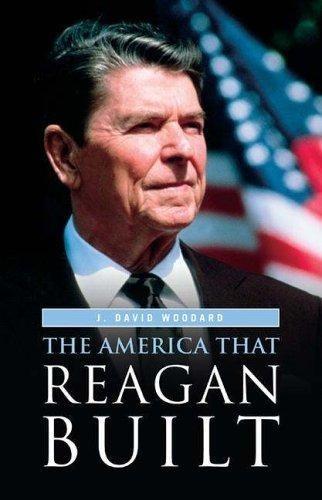
The America That Reagan Built
by
J. David Woodard
Published 15 Mar 2006
In July 1985, one of the biggest events in rock history, the Live Aid concert, was held simultaneously in London and Philadelphia. The concert was attended by 160,000 fans while another 1.5 billion watched it on television or listened on the radio in 130 countries. The two simultaneous all-day concerts involved pretty much anybody who was anybody in the rock-and-roll world, and Phil Collins caught the supersonic Concord to play in both cities on two different continents. Hundreds of thousands of people raised their voices together to end the show by singing, ‘‘We are the World.’’ The Live Aid concert raised over $80 million in foreign aid that went to seven African nations: Ethiopia, Mozambique, Chad, Burkina Faso, Niger, Mali, and Sudan.
…
See also Bitburg fiasco Korean Airlines Flight 007, 54 Koresh, David, 154 Kosovo, 189–91 Kuwait, 125–26, 128–29, 131, 134, 137 Lebanon: Iran-Contra scandal, 89–90; 1983 involvement, 59–62; TWA 847 hijacking, 88–89 Lennon, John, 72 leveraged buyout, 67 Lewinsky, Monica, 193–96 Lieberman, Senator Joe, 208–9, 233–34 Live Aid concert, 73 Los Angeles riots, 170–72 Luce, Henry, ‘‘The American Century,’’ Life magazine, 76 280 Index MAD (mutually assured destruction), 52 Madonna, 73 McCain, John, 205–7 McFarlane, Robert ‘‘Bud,’’ National Security Advisor, 88–89 McVeigh, Timothy, 176–78 media, 194; campaigns, 81–82, 146, 149, 188; domestic affairs, 172–74, 177, 203; foreign affairs, 131, 134, 160; politics, 140, 194–96 media markets, 31–32, 86, 113, 150, 188, 196, 207, 209, 237– 40 Medicare, 121, 185, 187 Microsoft, 163–64 Middle East, 14, 129, 141, 175, 224, 237, 243 Middle East Peace Accord, 155–57 midterm elections, 79, 129, 157, 204, 224 Milken, Michael, 67–68 Milosevic, Slobodan, 189–91 misery index, 27 modernism, 71–72 Mogadishu, 156 Mondale, Walter, 80–82 ‘‘Morning in America,’’ 83, 85, 187 MTV, 72 1980s, 25, 31–32, 35–36, 46– 47, 65–66, 69–70, 72, 77 1990s, 32, 131, 141, 152, 163, 165, 169, 176, 180–81, 196, 199–200 Nixon, Richard, 4, 17 ‘‘No Child Left Behind,’’ 213, 237 noblesse oblige, 112 Noriega, Manuel Antonio, 118–19 North, Oliver, 89–92 nuclear: freeze, 55, 56; prospect, 96; war, 55–57 Nader, Ralph, 208 NAFTA (North American Free Trade Agreement), 142, 161 Nagin, Ray, 243– 44 NASA, 93, 95 NASDAQ, 162 NATO (North Atlantic Treaty Organization), 189–91 Nelson, Prince Rogers, ‘‘Prince,’’ 72 New Democrat, 145, 157, 184 New Orleans, 243– 45 New Right, 28, 29 New York City, 220.
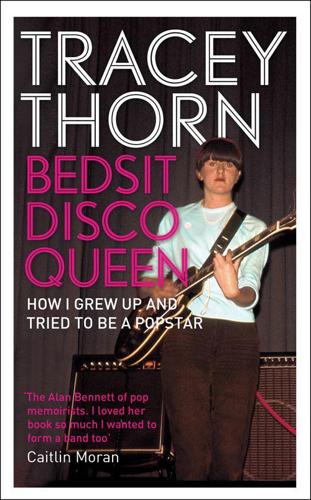
Bedsit Disco Queen: How I Grew Up and Tried to Be a Pop Star
by
Tracey Thorn
Published 7 Feb 2013
I would later see the decade reviled, and then revived, but in a manner that bore almost no relation to the years I had lived through. Events which many of us had shied away from, or sneered at, or at least had reservations about, from the Royal Wedding to Live Aid, have now become the unchallenged and unchallengeable iconic moments of the period. It’s not possible to say that you watched not a second of the wedding, and that you were dismissive of Live Aid, without sounding like a complete killjoy outsider, but many of us simply lived an entirely different set of experiences, which seem to have gone unrecorded and unwritten about, so that it’s as though they never happened.
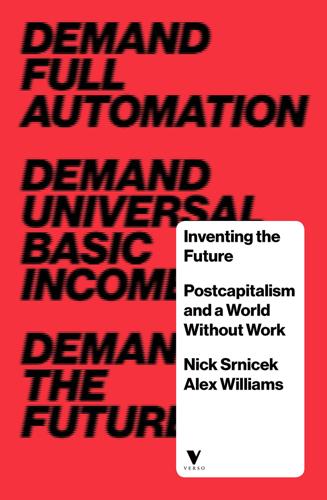
Inventing the Future: Postcapitalism and a World Without Work
by
Nick Srnicek
and
Alex Williams
Published 1 Oct 2015
In other places, public demonstrations of empathy with those suffering replace more finely tuned analysis, resulting in hasty or misplaced action – or none at all. While politics always has a relationship to emotion and sensation (to hope or anger, fear or outrage), when taken as the primary mode of politics, these impulses can lead to deeply perverse results. In a famous example, 1985’s Live Aid raised huge amounts of money for famine relief through a combination of heartstring-tugging imagery and emotionally manipulative celebrity-led events. The sense of emergency demanded urgent action, at the expense of thought. Yet the money raised actually extended the civil war causing the famine, by allowing rebel militias to use the food aid to support themselves.6 While viewers at home felt comforted they were doing something rather than nothing, a dispassionate analysis revealed that they had in fact contributed to the problem.
…
Index 1968, 16–7, 63, 188n33 15M, 11, 22 abstraction, 10, 15, 36, 44, 81 additive manufacturing, 110, 143, 150, 182 affect, 7–8, 113–4, 140–1 afro-futurism, 139, 141 AI (artificial intelligence), 110, 143 alienation, 14–5, 82 algorithmic trading, 111 Allende, Salvador, 148, 149 alternativism, 194n95 Althusser, Louis, 81, 141–2 anti-globalisation, 3, 159, 162 anti-war, 3, 5, 22, 162 Apple, 146, Arab Spring, 131, 159 Argentina, 37–9, 173 authenticity, 10–1, 15, 27, 82, 180 automation, 1–2, 86, 88–9, 94–5, 97–8, 104–5, 109–17, 122, 127, 130, 143, 150–1, 167, 171–4, 181–2, 203n15, 212n121, 214n161, 215n9, 218n45 banking, 43–6, 61, 147 Beveridge Report, 118 big data, 110, 111 Bolshevik Revolution, 131 Bolsheviks, 137 Russian Revolution, 139 Brazil, 75, 119, 147, 157, 169 Bretton Woods, 61–2 Brown, Michael, 173 care labour, 113–4 Chicago School, 51, 59–60 Chile, 52, 62, 148, 149, 150 China, 87, 89, 97, 170 class, 14, 16–7, 20–1, 25, 53, 64–5, 87, 91, 96–102, 116, 120, 122–3, 126–7, 132–3, 155–62, 170, 173–4, 189n1, 206n44, 233n119, 233n4, 233n5, 234n18 Cleaver, Eldridge, 91–2 climate change, 13–4, 116 colonialism, 73, 75–6, 96–7, 225n3 common sense, 9–11, 21–2, 40, 54–5, 58–60, 63–7, 72, 131–7 communisation, 92, 225n5 competitive subjects, 63–5, 99, 124 complex systems, 13–4, conspiracy theories, 14–5 cosmism, 139 Critchley, Simon, 72 cryptocurrencies, 143, 182 Cybersyn, 149–150 debt, 9, 22, 35–6, 94 demands, 6–7, 30, 33, 107–8, 130, 159–62, 167 no demands, 7, 34–5, 107, 186n3 non-reformist demands, 108 transitional demands, 215n5 democracy, 31–3, 182 direct democracy, 27–9, 31–3, 164, 190n8 direct action, 6, 11, 27–9, 35–6 education, 64, 99, 104, 141–5, 165–6 Egypt, 32–4, 190n21 energy, 2, 16,19,41, 42–43, 116, 147, 148, 150–51, 164, 171, 178, 179, 182, 183 Engels, Friedrich, 79 Erhard, Ludwig, 57 ethics, 42 work ethic, 124–6 evictions, 8, 12, 36 feminism, 18–21, 122, 138, 161 Fisher, Antony, 58–9, 196n34 food miles, 42–3 fracking, 8 France, 17, 62, 149, 167 free time, 80, 115–6, 120–1, 167, 219n50 freedom, 63–5, 120–1, 126–7, 180–1 negative freedom, 79 synthetic freedom, 78–83 Friedman, Milton, 56, 59–61 full employment, 98–100 future, 1, 71–5, 175–8, 181–3 G20, 6, 94 gender, 21, 41, 90, 122 Germany, 45, 56–7 ghettos, 95–6 Gramsci, Antonio, 132, 165 Graeber, David, 33 grand narratives, 73–4 Great Depression, 46, 65, 99–101, 114–5 Harvey, David, 135 Hayek, Friedrich, 54–6 Holzer, Jenny, 175, 178 horizontalism, 18, 26–39 housing, 8, 28, 35, 48, 77, 80, 95, 96, 148, 159, 167, 168, humanism, 81–3, 180–1 hyperstition, 74–5, 138–9 Iceland, 34, 164 idleness, 85–6 immediacy, 10–1 immigration, 101–2, 161 India, 87, 97–8, 130 inequality, 22, 80, 93–4 informal economy, 95–8, 203n10, 206n44, 210n95 Institute of Economic Affairs, 58–9 Iranian Revolution, 131 Jameson, Fredric, 14, 92, 198n10 Japan, 147 Jimmy Reid Foundation, 117 jobless recovery, 94–5 Jobs, Steve, 179 Johnson, Boris, 172 Kalecki, Michał, 120 Krugman, Paul, 118 labour, 2, 3,9, 17, 20, 21, 33, 38, 48, 52, 58, 61–3, 74, 79, 81, 83, 85–143, 148, 150, 151, 156–8, 161, 163–181, 182 Laclau, Ernesto, 155, 159 Lafargue, Paul, 115, language, 81, 132, 160, 164–5 leisure, 85–6 Leninism, 17, 131, 188n33 Live Aid, 8 localism, 40–6 locavorism, 41–2 Lucas Aerospace, 147 Luxemburg, Rosa, 15 Lyotard, Francois, 73, 74 Manhattan Institute for Policy Research, 58, 59 marches, 6, 30, 49 Marikana massacre, 170 Marinaleda, 48 Marx, Karl, 73, 79, 85, 86, 92, 115, 119, 121, 122, 132, 142, 156, 158, 180 Mattick, Paul, 92, 118 media, 2, 7–8, 31, 36, 52, 58, 60, 63, 67, 88, 118, 125–6, 129, 133–5, 163–5, 176, 182 Mirowski, Philip, 66 modernity, 23, 63, 69–85, 86, 131, 176, 181 modernisation, 23, 60, 63, 137, 174 Mont Pelerin Society, 54, 86, 134, 164, 166 MPS, 55, 56, 58, 66, 67, 134 Move Your Money, 44 Murray, Charles, 59 Musk, Elon, 179 National Union of Rail, Maritime and Transport Workers, 172 negative solidarity, 20, 37 neoliberalism, 3, 12, 20–3, 47, 49, 51–67, 70, 72, 108, 116, 117, 119, 121, 124, 134, 141, 142, 148, 156, 176, 179, 183 neoliberal, 7, 9, 14–16, 20, 21, 37, 47, 49, 73, 93, 99, 118, 126, 127, 129, 131–2, 134, 135, 162, 169, 174, 176, 181 New Economics Foundation, 117, 144 new left, 18–22 New Zealand, 151 occupations, 5, 7, 10, 11, 29–31, 34, 49, 94, 172 Occupy Wall Street, 3, 6, 7, 11, 18, 22, 26, 29–38, 126, 133, 158, 159, 160, 162, 189n1 ordoliberals, 54, 57 organic intellectual, 165–6 Overton Window, 134, 139 Partido dos Trabalhadores, 169 parties, political, 2, 10, 16, 17, 18, 20, 21, 30, 34, 39, 46, 59, 105, 116, 118, 124, 129, 162, 164, 168, 169 personal savings, 94 Piketty, Thomas, 140 Plan C, 117 planning, 1, 15, 56, 141, 142, 149, 151, 182 Plant, Sadie, 82 Podemos, 159, 160, 169 police, 6, 30, 33, 36, 37, 102, 133, 161, 168, 171, 173 postcapitalism, 17, 38, 130, 143, 145, 150, 151, 158, 168, 178, 180 postcapitalist, 12, 15, 16, 32, 34, 83, 109, 115, 126, 136, 143, 145, 150, 152, 153, 157, 179, 180 Post-Crash Economic Society, 143 post-work, 23, 69, 83, 85, 86, 105, 107–127, 129, 130, 138, 140, 141, 153, 155, 156, 158, 161, 163, 164, 167, 174, 175, 176, 177, 178 Pou Chen Group, 170 power, 1, 2, 7, 9, 10, 14, 15, 18–21, 26, 28–30, 33, 36, 43, 46, 48, 49, 59, 61, 62, 65, 73, 78, 79, 80, 81, 87, 88, 93, 100, 108, 111, 116, 120, 123, 127, 130–5, 146, 148, 151, 153, 155–74, 175, 176, 179, 180, 182 precarity, 9, 86, 88, 93, 94, 95, 98, 104, 121, 123, 126, 130, 156, 157, 166, 167, 173, 174 precarious, 2, 64, 117, 129, 167 Precarious Workers Brigade, 117 premature deindustrialisation, 97, 98 primitive accumulation, 87, 89, 90, 96, 97 prison, 90, 102, 103, 119, 133 incarceration, 102, 103, 104, 105, 161 productivity, 74, 88, 97, 110–17, 125, 150, 167 progress, 21, 23, 46, 71–5, 77, 107, 114, 115, 120, 126, 131, 138, 179, 180 protests, 1, 7, 18, 22, 28, 31, 37, 49, 66, 153, 164 psychopathologies, 64 radio-frequency identification, 110 race, 14, 31, 90, 102, 103, 140, 156, 171, 172 Reagan, Ronald, 60, 62, 66, 70 Republican Party (US), 135 resistance, 2, 5, 12, 15, 30, 35, 46–8, 49, 69, 72, 74, 83, 114, 124, 134, 158, 173, 181 Rethinking Economics, 143 Robinson, Joan, 87 Roboticisation, 110, 209n69 mechanisation, 95, 101 Rolling Jubilee, 9 Samuelson, Paul, 142 second machine age, 111 secular stagnation, 143 self-driving cars, 110, 111, 113, 173 shadow work, 115 slavery, 74, 90, 95, 103 slow food, 41, 42 slum, 86, 96–8, 102, 104 social democracy, 3, 17, 46, 66, 70, 167, 176 social democratic, 10, 13, 16, 17, 19, 21, 22, 47, 57, 72, 80, 98, 100, 108, 123, 127, 168 social media, 1, 8, 182 South Africa, 119, 157, 170 Spain, 12, 22, 34, 35, 45, 159, 164 stagflation, 19, 27, 61, 65, 100 Stalinist, 17, 18, 137 strategy, 12, 20, 26, 49, 56, 67, 117, 127, 131–3, 136, 148, 153, 156, 163, 164 strategic, 8, 9, 11, 12, 14, 15, 17, 18, 25, 28, 29, 35, 49, 52, 55, 66, 70, 77, 108, 116, 131, 135, 157, 162, 163, 164, 170, 171, 173, 174 strikes, 9, 10, 28, 36, 37, 116, 120, 157, 167, 170–3 suicide, 94 surplus populations, 40, 86, 88–94, 96–97, 101–3, 104, 105, 120, 130, 166–7, 173, 203n10 Syriza, 159, 160 tactics, 6, 10, 11, 15, 18, 19, 26, 28, 39, 40, 49, 157, 164, 171–4 Tahrir Square, 32, 34 Taylorism, 152 technology, 1, 3, 72, 81, 88, 89, 98, 109, 110, 111, 129, 136, 137, 145–8, 150–3, 178, 179, 182 Thatcher, Margaret, 59, 60, 62, 66, 70, 72, 100 think tanks, 16, 55, 56, 58, 59, 60, 63, 67, 117, 134, 135, 165 trade unions, 10, 27, 47, 59, 61, 62, 71, 105, 116, 117, 124, 129, 148, 162, 166 labour unions, 16, 171 unions, 17, 18, 20, 27, 30, 44 UK Uncut, 126 unemployment, 20, 56, 60, 79, 86–98, 99, 100, 101, 101, 102, 115, 116, 118, 121, 123, 125, 127, 129, 147, 159, 161, 168, 170, 173, 207n44 United Automobile Workers, 170 United Kingdom UK, 8, 20, 40, 42, 45, 52, 54, 56, 58, 61, 62, 92, 93, 94, 117, 118, 126, 144, 147, 151, 172 United States, 8, 18, 29, 36, 44, 45, 59, 62, 78, 92, 95, 103, 114, 118, 123, 133, 135, 138, 167 America, 6, 16, 30, 38, 47, 56, 62, 76, 95, 97, 98, 100, 101, 102, 103, 110, 164 universal basic income, 108, 118, 123, 127, 140, 143 basic income, 80, 108, 118, 119, 120, 121, 122, 123, 124, 127, 129, 130, 140, 143, 164, 165, 167 universalism, 69, 70, 75–8, 83, 119, 132, 175, 197n1, 199n40 USSR, 62, 63, 79, 139 Soviet Union, 57, 70, 74, 139 utopia, 3, 28, 32, 35, 48, 54, 58, 60, 66, 69, 70, 72, 108, 113, 114, 132, 136, 137, 138, 139, 140, 141, 143, 145, 146, 150, 153, 177, 179, 181, 182 vanguard functions, 163 Venezuela, 169 wages, 2, 71, 87, 90, 91, 93, 94, 97, 98, 101, 111, 120, 122, 125, 156, 166, 167 welfare, 14, 38, 57, 59, 61, 62, 63, 64, 71, 73, 90, 100, 101, 103, 105, 118, 119, 122, 124 Wilde, Oscar, 182 withdrawal, 11, 47, 48, 69, 131, 182 exit, 47, 48, 181 escape, 3, 9, 11, 38, 69, 107, 114, 139, 165, 178 work, 1, 2, 16, 17, 23, 32, 36, 41, 44, 47, 64, 71, 85, 86, 90–6, 98, 100, 101, 103–5, 108, 109, 110–7, 120–7, 130, 131, 132, 133, 134, 136, 140, 141, 142, 143, 147, 150, 151, 152, 157, 163, 165, 166, 170, 173, 174, 176, 177, 178, 181 wage labour, 74, 85, 86, 87, 89, 90, 92, 103, 104, 105, 120, 136, 141, 180 job, 2, 38, 41, 47, 48, 63, 64, 79, 85, 86, 88, 89, 90, 93, 94, 95, 96, 97, 98, 99, 100, 101, 103, 104, 105, 110, 111, 113, 114–23, 124, 125, 126, 129, 147, 148, 161, 166, 167, 171 worker-controlled factories, 38, 39 workfare, 59, 100, 104 World Trade Organisation, 6 World War II, 46, 54, 56, 57, 115, 156 Zapatistas, 11, 22, 26, 35 zero-hours contracts, 93 Žižek, Slavoj, 140 Zuccotti Park, 31, 32
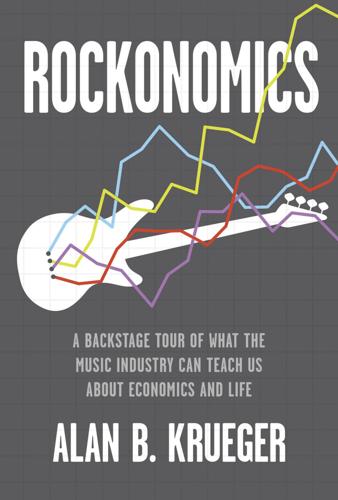
Rockonomics: A Backstage Tour of What the Music Industry Can Teach Us About Economics and Life
by
Alan B. Krueger
Published 3 Jun 2019
Here are a few notable examples: Bangladesh George Harrison and his sitar mentor, Ravi Shankar, led two landmark benefit concerts in 1971, and produced a live album and a documentary film for Bangladesh that eventually raised $12 million in humanitarian aid for the new nation, which was overwhelmed by war, natural devastation, and millions of refugees.35 “We Are the World” A charity song written by Michael Jackson and Lionel Richie and produced by Quincy Jones in 1985 that raised over $60 million for humanitarian aid in Africa and the United States. A star-studded cast of more than forty singers appeared on the recording.36 Live Aid Benefit Concerts A pair of concerts organized by the Irish and Scottish musicians Bob Geldof and Midge Ure to raise funds for humanitarian relief for Ethiopia, which was suffering a famine at the time. Over $200 million in donations was raised.37 Countless artists have supported social causes.
…
See Ben Cosgrove, “Concert for Bangladesh: Photos from the First-Ever Rock ’n’ Roll Benefit Show,” Time, Jul. 30, 2013. 36. See Amy Robinson, “Michael Jackson ‘We Are the World,’ ” The Borgen Project, Jan. 27, 2014, https://borgenproject.org/michael-jackson-world. 37. See Catherine McHugh, “Live Aid 30th Anniversary: The Day Rock and Roll Changed the World,” Biography.com, Jul. 12, 2015. 38. Milton Friedman and Rose D. Friedman, Capitalism and Freedom (Chicago: University of Chicago Press, 1962). 39. Larry Fink, BlackRock, “A Sense of Purpose,” annual letter to CEOs, 2017. 40.
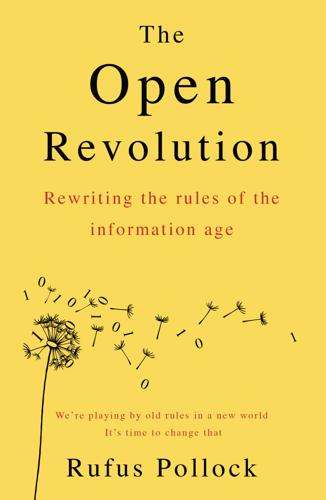
The Open Revolution: New Rules for a New World
by
Rufus Pollock
Published 29 May 2018
These scientists did not work for the Burroughs Wellcome Company. They were doing investigator-initiated research, which required resources and reprogramming from other important projects, in response to a public health emergency. Indeed, one of the key obstacles to the development of AZT was that Burroughs Wellcome did not work with live AIDS virus nor wish to receive samples from AIDS patients. Presented with a working drug, the result of several decades of research, Burroughs Wellcome had merely carried out the final set of clinical trials to win approval for use from the regulator, the US Food and Drug Administration (FDA). And even here, they received assistance.

The Life of a Song: The Fascinating Stories Behind 50 of the World’s Best-Loved Songs
by
David Cheal
and
Jan Dalley
Published 20 Sep 2017
In June 2016, after a colourful trial during which Jimmy Page was quizzed as to whether the Mary Poppins song ‘Chim Chim Cher-ee’ might have influenced ‘Stairway’, a jury in California rejected the claim. For years after the dissolution of the band in 1980, Plant refused to perform the song, although he was pressed into it for Live Aid (1985), along with Zeppelin colleagues Page and Jones, backed by the drummers of Genesis and Chic, as well as for the 2007 Led Zeppelin reunion that marked the death of their record company boss Ahmet Ertegun. Both renditions were ramshackle. Unlike other Zeppelin warhorses, it is not part of his current set with Plant’s band, The Sensational Space Shifters.
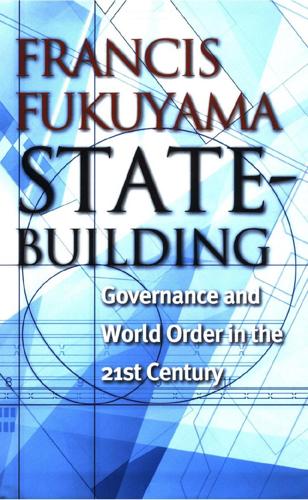
State-Building: Governance and World Order in the 21st Century
by
Francis Fukuyama
Published 7 Apr 2004
The dominant trend in world politics for the past generation has been, after all, the critique of “big government” and the attempt to move activities from the state sector to private markets or to civil society. But parix x preface ticularly in the developing world, weak, incompetent, or nonexistent government is the source of severe problems. For example, the AIDS epidemic in Africa has infected more than 25 million people and will take a staggering toll of lives. AIDS can be treated, as it has been in the developed world, with antiretroviral drugs. There has been a strong push to provide public funding for AIDS medicine or to force pharmaceutical companies to permit the marketing of cheaper forms of their products in Africa and other parts of the Third World.

The Fry Chronicles: An Autobiography
by
Stephen Fry
Published 27 Sep 2010
It was a glorious summer’s day, and, as we all wanted to watch television, Richard unwound an extension cord and put the set on a wooden chair in the shade of an apple tree. We sat on the grass and watched Live Aid all the way through to the end of the American broadcast from Philadelphia. ‘We should do something similar,’ Richard said. ‘How’s that?’ I wasn’t sure what he could mean. ‘Comedians can raise money too. Look at what John Cleese did for Amnesty with those Secret Policeman’s Balls.’ ‘So you mean a Comedians’ Live Aid show?’ Richard nodded. He had already been germinating Comic Relief in his head for some time. Now, almost twenty-five years later, he has devoted six or seven months of his time every other year to an organization that, love or loathe the enforced custardy jollities of its biennial television pratfest, has raised hundreds of millions of pounds to comfort those who have sorely needed it.
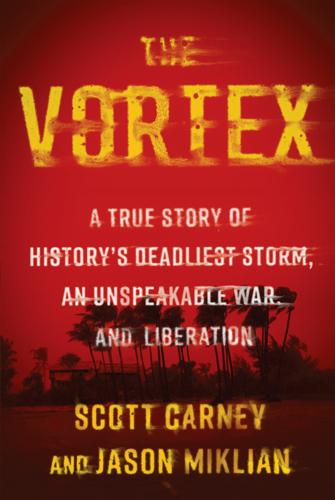
The Vortex: A True Story of History's Deadliest Storm, an Unspeakable War, and Liberation
by
Scott Carney
and
Jason Miklian
Published 28 Mar 2022
Piggybacking off of Beatlemania, the album of the concert sold a million copies and won a Grammy, raising nearly $10 million. It became the model for dozens of other aid concerts that followed. Ever since, celebrity activists have tried to use their brand to amplify worthy causes. To name just two, Bono and Bob Geldof called the concert an inspiration for Live Aid, the world’s second major aid concert aimed at raising money for the 1985 Ethiopian famine victims. But the aftermath of the Concert for Bangladesh had a darker side. Money that was supposed to go to UNICEF sat in a lawyer’s bank account for twelve years awaiting an IRS audit into tax evasion and improper nonprofit registration.
…
B., 350–351 Le Gourmet, 47–48 Lennon, John, 288 Liberation War Bay of Bengal submarine ploy, 348–351 at Chargram, 337–342 covert mission to bomb Dacca orphanage, 344 Grand Hotel as press headquarters, 349 in Karachi, 358 Operation Chengis Khan, 328–329, 331–333, 354 USS Enterprise, 346, 347–349, 362–364, 368 Yahya celebrations during, 346 Line of Control, 18 Live Aid, 410 Machado, David, xviii, xxii Madhur Café, 12–13 Mahajagmitra (ship), xvii–xxii, 104 Mahmud, Malik capturing Tonir, 372–374 election results reactions, 146–150 Hai and, 58, 106, 304–308, 323–325 joining Manpura regiment, 236 joining the resistance, 240–243, 256–262 military training of, 304 mission assigned to, 305–308 post-liberation, 412 on reconnaissance missions, 320–321 return to Manpura Island, 304 on Tonir as a razakar, 323–325 at Tonir’s trial, 375–376 at weapons handover ceremony, 394–397 Majhar, Tanvir, 300–302 Manpura Island.

A History of Modern Britain
by
Andrew Marr
Published 2 Jul 2009
They formed a thirty-strong ‘supergroup’ to make a fundraising Christmas single, ‘Do They Know It’s Christmas?’ It raised £65 m and Geldof managed to persuade Margaret Thatcher to waive VAT for the famine victims. This success was followed by Live Aid, a linked global concert held in London and Philadephia in 1985. It was watched by an estimated 1.5 billion people in 160 countries, making it by far the biggest world television event to that point. Geldof continued to campaign on Africa, joining the Commission for Africa. Having sworn he would never try to repeat Live Aid, Geldof did so in 2005 with a host of rock stars, including U2 and the (briefly) reformed Pink Floyd, breaking more records for global audience numbers.
…
Tennant Ltd ref1 Hobson, Harold ref1 holidays ref1 Holidays with Pay Act ref1 Holtham, Gerald ref1 Holy Loch ref1, ref2 Home, Alec Douglas- ref1, ref2, ref3 homosexuality ref1, ref2 legalization of ref1 purge of ref1 in the theatre ref1 see also AIDS Horizon ref1 Hornby, Lesley ref1 housing ref1, ref2, ref3, ref4 see also council houses; tower blocks Housing Action Trusts ref1 Howard, Michael ref1, ref2 Howe, Geoffrey ref1, ref2, ref3, ref4, ref5, ref6 on the Eurodollar ref1 and North Sea oil ref1, ref2, ref3 and privatization ref1 Howell, David ref1 Howells, Kim ref1 Hulanicki, Barbara see Biba human rights ref1 Hume, John ref1 humour ref1 Hunter, Anji ref1 hunting ref1 Hunt Saboteurs Association ref1 Hurcomb, Cyril ref1 Hurd, Douglas ref1, ref2, ref3 Hussein, Saddam ref1, ref2, ref3, ref4, ref5, ref6 Hutton Enquiry ref1 Hutton, Len ref1 Hyman, Peter ref1 Hyndley, Viscount ref1 ICI ref1 ID cards ref1, ref2 IEA (Institute for Economic Affairs) ref1 Iki, Lieutenant ref1 IMF (International Monetary Fund) ref1 immigration ref1, ref2, ref3 Indians ref1 Kenyans ref1 Pakistani ref1 Powell on ref1, ref2, ref3, ref4 Ugandan Asians ref1, ref2 West Indian ref1 see also asylum seekers; multi-culturalism immigration and nationality department (IND) ref1 India immigrants from ref1 independence ref1 industry ref1, ref2, ref3 see also car industry; coal; rail system inflation ref1, ref2 Ingham, Bernard ref1, ref2 Ingrams, Richard ref1, ref2, ref3 Institute for Economic Affairs (IEA) ref1 International Monetary Fund (IMF) ref1 internet ref1, ref2 IQ tests ref1 IRA (Irish Republican Army) ref1, ref2, ref3, ref4, ref5, ref6, ref7 Iraq ref1, ref2, ref3, ref4, ref5, ref6, ref7 Iran, Shah of ref1 Ireland, Republic of ref1 see also Northern Ireland Irish ref1 Irish Republican Army (IRA) ref1, ref2, ref3, ref4, ref5, ref6, ref7 Irvine, Derry ref1, ref2 Islam, militant ref1 Isle of Skye bridge ref1 Israel, and Suez ref1 Issigonis, Alec ref1 Ivanov, Yevgeny ref1 Jagger, Mick ref1 Jam, the ref1 James Bond ref1 jazz ref1 Jenkins, Roy ref1, ref2, ref3, ref4, ref5, ref6 as Chancellor ref1 and Europe ref1, ref2 on immigration ref1 and the SDP ref1 Jenkins, Simon ref1, ref2, ref3 Jews ref1, ref2, ref3 Jinnah, Mohammad Ali ref1 Johnstone, Tom ref1 Jones, Clem ref1 Jones, Jack ref1 Jordan, model ref1 Joseph, Keith ref1, ref2 Joseph Rowntree Trust ref1 Kaufman, Gerald ref1 Keeler, Christine ref1 Kelly, David ref1 Kemp, Alex ref1 Kennedy, Charles ref1, ref2 Kennedy, John F. ref1 Kennedy, Ludovic ref1, ref2 Kenya ref1 immigrants from ref1 Kenyatta, Jomo ref1, ref2 Keynes, John Maynard ref1, ref2 Khrushchev, Nikita ref1, ref2, ref3 Kilmuir, Lord ref1 King, Cecil, and Wilson ref1 King, John ref1 Kinks Are The Village Green Preservation Society, The (The Kinks) ref1 Kinks, the ref1, ref2, ref3 Kinnock, Neil ref1, ref2, ref3, ref4, ref5, ref6, ref7 leadership election ref1 and the militants ref1 and the miners’ strike ref1 and Scargill ref1 and unilateral nuclear disarmament ref1 on Welsh devolution ref1 Koestler, Arthur ref1 Korean War ref1 Kosovo Liberation Army ref1 Kuanda, Kenneth ref1 Labour Party ref1, ref2, ref3 achievements ref1, ref2 conference, 1945 ref1 and devolution ref1 internal conflict ref1 public spending ref1 reform of ref1 see also New Labour; Scottish Labour Party Lady Chatterley trial ref1 Lamont, Norman ref1, ref2, ref3, ref4, ref5, ref6 landowners ref1 Laski, Harold ref1 Lawson, Nigel ref1, ref2, ref3, ref4 and the economy ref1, ref2, ref3 and North Sea oil ref1, ref2, ref3 and the poll tax ref1 and privatization ref1, ref2, ref3 Leach, John ref1 League Against Cruel Sports ref1 League of Empire Loyalists see NF league tables, police ref1 Leathers, Lord ref1 Lee, Jennie ref1 Lend-Lease ref1, ref2 Lennon, John ref1, ref2 lesbianism ref1 Levy, Michael ref1 Lewis, C. S. ref1 Liberal Democrats ref1 Liberal Party ref1, ref2 and the SDP ref1 Liddle, Roger ref1 LIFFE ref1 Lilley, Peter ref1 Limehouse Declaration ref1 Litterick, Tom ref1 Littlewood, Joan ref1 Live Aid ref1 Live8 ref1 Live and Let Die (Fleming) ref1 Liverpool City Council ref1 Liverpool Parks and Cemeteries ref1 Lloyd, Selwin ref1, ref2 London ref1 terrorist attacks on ref1 London Stock Exchange ref1 Look Back in Anger (Osborne) ref1, ref2 Lovelock, James ref1 LSD ref1 Lubetkin, Berthold ref1 Maastricht Treaty ref1, ref2, ref3 MacArthur, Douglas ref1 Macaulay, Sarah ref1 MacColl, Ewan ref1, ref2 Macdonald, Ian ref1 MacDonald, Margo ref1 MacGregor, Ian ref1 MacGregor, John ref1 Maclean, Donald ref1, ref2 Macleod, Iain ref1, ref2, ref3 Macmillan, Harold ref1, ref2, ref3, ref4, ref5, ref6, ref7 on Africa ref1 attitude to spies ref1 on decolonization ref1, ref2 and de Gaulle ref1 and the economy ref1 and Europe ref1 and nuclear weapons ref1 and Powell ref1, ref2 social class ref1 mad cow disease ref1 Major, John ref1, ref2, ref3, ref4, ref5 and the ERM ref1 as Prime Minister ref1 and Thatcher ref1 wars ref1 majority verdicts ref1 Make Poverty History ref1 Malawi see Nyasaland Malaya ref1 Manchester, Moss Side ref1 Mandelson, Peter ref1, ref2, ref3, ref4, ref5, ref6, ref7, ref8, ref9 manufacturing ref1 Mao Tse-tung ref1 marches ref1 Marcuse, Herbert ref1 Marples, Ernie ref1, ref2, ref3 Marshall Plan, the ref1, ref2 Mates, Michael ref1 Mathew, Theobald ref1 Matrix Churchill ref1 Matthews, Stanley ref1 Mau Mau rebellion ref1 Maxwell Fyfe, David ref1, ref2, ref3 Mayer, Louis B. ref1 McCartney, Paul ref1, ref2, ref3 McCullin, Don ref1 McGahey, Mick ref1, ref2 McGuinness, Martin ref1, ref2 McMahan Act ref1 McLaren, Malcolm ref1, ref2, ref3, ref4 McNulty, Graeme ref1 McNulty, Tony ref1 means-testing ref1 Medium-Term Financial Strategy (MTFS) ref1, ref2 Melody Maker ref1 Meyer, Anthony ref1 Microsoft ref1 Middle East ref1 Middlemass, Keith ref1 migration, Jewish ref1 Migration Watch UK ref1 Mikardo, Ian ref1 Milburn, Alan ref1, ref2 Miliband, David ref1 Militant Tendency ref1, ref2, ref3, ref4 military ref1, technology ref2 Millennium Dome ref1, ref2 Miller, Arthur ref1 Miller, Jimmie see MacColl, Ewan Milligan, Spike ref1, ref2 Millington, Ernest ref1 Milosevic, Slobodan ref1 miners, strikes ref1, ref2, ref3, ref4 Mini-Minor ref1 minimum wage ref1 mini-skirts ref1 Ministry of Agriculture, Fisheries and Food ref1 Ministry of Economic Expansion see DEA Ministry of Production see DEA Mitchell, George ref1 Mittal, Lakshmi ref1 Mitterand, François ref1 mobile phones ref1, ref2 Mods ref1 Molotov, Vyacheslav Mikhailovich ref1 monarchy ref1 Monckton, Walter ref1, ref2 Monday Club ref1 monetarism ref1, ref2 Montagu, Lord ref1, ref2, ref3 Montgomery of Alamein ref1 Moore, Jeremy ref1 Moore, Jo ref1 morality ref1 Morris, Estelle ref1 Morris Minor ref1, ref2 Morrison, Herbert ref1, ref2, ref3, ref4, ref5, ref6, ref7, ref8, ref9 Morrison, Van ref1 mortgages ref1 Morton, Andrew ref1 Morton, H.

Brit-Myth: Who Do the British Think They Are?
by
Chris Rojek
Published 15 Feb 2008
Freddie Mercury, the camp lead singer of Queen, whose whole life might be interpreted as a rejection of narrow, British masculine conventions, occupies 58th place. James Connolly, one of the Irish revolutionaries who led the 1916 Easter uprising, is 64th. The occultist and drug addict Aleister Crowley is 73rd. Bob Geldof, the pop singer who gained world fame by organizing Live Aid, is 75th. John Lydon (‘Johnny Rotten’), the lead singer of the Sex Pistols, is 87th – one place ahead of Montgomery of Alamein. Bono, the lead singer of u2 and activist for world peace, is number 86. Marie Stopes, the campaigner for women’s rights who was vilified in her day for advocating birth control, is 100th.

Is It Just Me?
by
Miranda Hart
Published 14 Apr 2012
I’ll have to go to China so I’ll miss the school trip to Dungeness Power Station, but that won’t matter because I’ll get famous from my panda charity and I’ll be able to go back there in the autumn as a celebrity. I think that David Van Day will be involved with my panda charity. And if we’re doing the pandas and rainforests then we might as well do Africa as well. We can have a big concert like Live Aid, David Van Day can sing a song, and I can sing the bits I learnt for my choir audition, and it can be at Wembley. I imagine people will want to make a film about it, so I’ll have to be careful with contracts etc. If it wins an Oscar I’ll need to look nice for the Oscars, so I must get Mum to buy me that purple shirt from C&A.
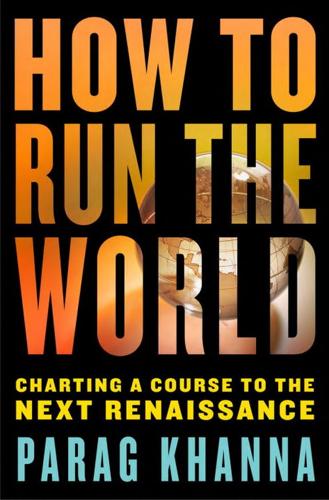
How to Run the World: Charting a Course to the Next Renaissance
by
Parag Khanna
Published 11 Jan 2011
Frankly, history couldn’t care less what you or I say tonight. History only cares what we do when we leave, in the weeks, months, years even, that follow.”2 Corporate funding to combat AIDS has grown year after year. Bono’s sometimes partner in crime, British ex-rocker Bob Geldof, is known for a less subtle approach. At Live Aid in 1985, he simply screamed into the microphone, “Give us the fucking money!” As far as the people of destitute villages are concerned, it doesn’t matter if the person bringing freshwater, food, or vouchers is bug-eyed Bono or a stiff man in a suit—it’s what he delivers that matters. Even absent an “Actors Without Borders” organization, the celebrity-diplomat model has rapidly spread from West to East.
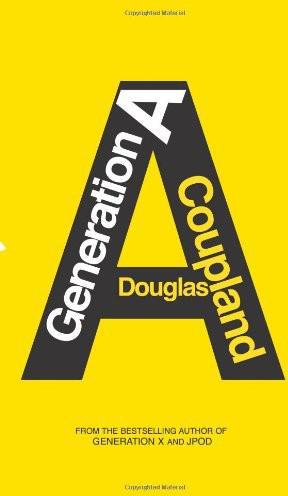
Generation A
by
Douglas Coupland
Published 2 Jan 2009
Maybe a quarter-mile away from the farm, I saw the first souvenir stand: a mobile home with some folding card tables out front, manned by an astonishingly fat woman wrapped in a blue shipping blanket and cuddling a pug. She was so odd-looking that I didn’t register the T-shirts at first: enlarged screen snaps of me naked. What the . . . ? There was another stand, then another, and then a small improvised community of people who’d been camping in tents like the farm was Live Aid 1985. There were also tailgate-partying tourists along the roadside who reminded me of the crowds who used to go to the old space shuttle launches in Florida. Nobody was paying any attention to my Mexican’s truck or to me. At the lane that leads to my place, a pair of armed guards stood before a long, man-high helix of razor wire.
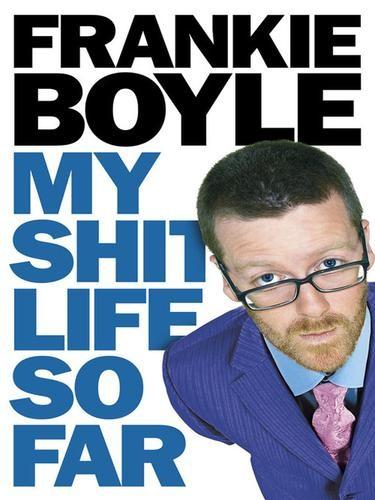
My Shit Life So Far
by
Frankie Boyle
Published 30 Sep 2009
What they’re trying to do is make their kids less attractive to paedophiles. What they’re forgetting is that they’re making it more difficult for them to run away. In Vegas I once saw an incredibly fat man on one of those little mobility scooter things, except he’d driven it onto a moving walkway, so he didn’t even have to drive. Now that’s lazy. Live Aid was a huge thing at school. I think it’s fair enough for kids to get excited about something like that. But the adults who bought it should have really been embarrassed. ‘The Christmas bells that ring there are…the clanging chimes of doom?’ Did that really happen? Even at 12, I’d had a host of sexual nightmares that were less weird than the video to that song.
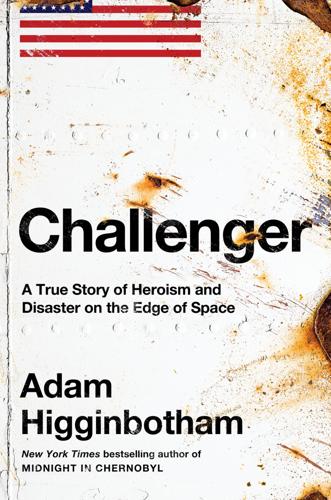
Challenger: A True Story of Heroism and Disaster on the Edge of Space
by
Adam Higginbotham
Published 14 May 2024
At the beginning of October, NASA Associate Administrator for Spaceflight Jesse Moore personally called Nelson to tell him he had been assigned to fly the five-day mission in December with Hoot Gibson’s crew, as a “Congressional observer.” Anxious to avoid being seen as merely a glad-handing joyrider, the politician signed up for a series of make-work orbital tasks, including photographing drought-wracked Ethiopia—made the subject of global attention by the summer’s Live Aid concerts—and conducting a crystal-growth experiment as part of a University of Alabama medical school cancer study. Behind his back, the astronauts mocked these endeavors as Nelson’s personal bid to “end the famine in Ethiopia” and “find the cure for cancer.” With Jarvis’s seat on Columbia now taken by Representative Nelson, George Abbey shuffled his shuttle trip back once more, to the first launch scheduled in the new year.
…
W., 237, 260, 298, 305–6, 366, 370, 371 Butterworth, Bill, 209–11, 225–27 Butterworth, Jenny, 225 Cain, LeRoy, 448 CapCom (Capsule Communicator), 94, 116, 130, 138, 139, 151, 346, 352, 443 Cape Canaveral, 16, 53, 54, 155, 156, 189, 203, 211, 231–34, 243, 256, 257, 273, 284, 295, 299, 340, 347, 379, 390, 404, 426, 444 Astronaut Candidates at, 108 Challenger and, 143, 183–84, 227 STS-51-L mission, 238, 293, 294, 295, 304, 307, 308, 310, 323, 325, 330, 331, 340, 356, 360, 367 Columbia and, 113, 116, 118, 119, 127–30, 173 Launch Control Center at, 16, 129, 130, 183, 198, 200, 236, 289, 290, 292, 294 Challenger STS-51-L and, 299, 303, 304, 307, 308–10, 335, 337, 338, 341, 343, 344, 346–47, 350, 354, 356, 361, 363, 364 Nelson and, 276 solid rocket booster assembly at, 159, 162, 163, 166, 168–72 Vehicle Assembly Building at, 123, 159, 169, 170, 172, 247, 270, 286, 305, 306, 347, 399 weather at, 247, 303, 305, 307, 310–13 see also Kennedy Space Center Carbonated Beverage Dispenser Evaluation, 238 Carson, Johnny, 216–17, 243 Carter, Jimmy, 78, 94, 100–102, 119–21, 123, 124, 128 Iran hostage crisis and, 121, 128 Carter, Sonny, 340, 362, 427, 437, 439 CBS, 4, 28, 31–32, 317, 360 CBS Evening News, 13 Central Intelligence Agency (CIA), 44, 59 Cernan, Gene, 23, 27–28, 31–32, 66, 76, 229, 237 Cernan, Teresa Dawn, 28 Chaffee, Martha, 7, 8, 15–16, 22, 23 Chaffee, Roger, 7–8, 15–16 on Apollo 1 mission, 7–13, 15–21 death in, 7, 20–21, 22–27, 29, 30, 60, 94, 369, 377, 426 burial of, 23 Chaffee, Sheryl, 23 Chaffee, Stephen, 23 Chaikin, Andrew, 190 Challenger Center for Space Science Education, 443 Church of Latter Day Saints, 160, 247 CIA, 44, 59 Citizens in Space Task Force, 217–19 civil rights movement, 29, 30, 71, 74 Clear Lake, 63, 91, 94, 102, 111, 112, 115, 135, 145, 146, 148, 150, 215, 244, 274, 280, 370–71, 374, 379 Clear Lake High School, 145 Cleveland Call and Post, 74 clevis-and-tang joints, 163, 164, 166, 167, 170, 255, 381, 392 Clifford, Sophia, 230 Clinton, Bill, 456 CNN, 2, 343, 348, 352, 355, 360, 366, 385 Coast Guard, 400–402, 425 Cobb, Geraldyn “Jerrie,” 67–69, 71 Coca-Cola, 238 Cochran, Jacqueline, 67, 69 Cold War, 29, 32, 41, 43–44, 160, 231–32, 444 cold weather, 321 Challenger STS-51-L launch and, 337, 367, 368, 385, 386, 388, 389 booster rocket temperature, 337–38, 345 launchpad ice, 311, 325, 333–34, 337–41, 343, 345, 349 O-rings and, 253–57, 259, 262, 392, 393 Challenger STS-51-L disaster and, 349–51, 381, 384 Challenger STS-51-L launch concerns about, 297, 300–301, 303–7, 310–20, 321–32, 335–36, 430, 436 Discovery STS-51-C and, 247, 253–55, 303–4, 311, 313, 324, 329 Feynman’s ice water demonstration on, 393–94 Collins, Michael, 7, 22, 55, 90, 281–82 Collins, Pat, 281 Columbia Accident Investigation Board, 449 Concord High School, 223, 350 Concord Monitor, 221 Congress, 105, 115, 376, 380 Apollo program hearings of, 25–27 NASA budget cut by, 52, 53 Space Shuttle funding and, 57–58, 61 Congressional Committee on Science and Astronautics, 69 Constitution, US, 418 contingency abort, 155 Corlew, Johnny, 309, 310, 317, 339, 340 Corrigan, Ed and Grace, 222, 297, 299, 302, 342, 350, 354, 357, 358, 362, 375–76 Covey, Dick, 3, 103, 346 Crippen, Bob, 105, 116, 122, 123, 127, 129–39, 141, 151, 183, 236, 378, 399–402, 412, 420, 436, 444, 446 post-Challenger life of, 451 Crippen, Ginny, 225 Cronkite, Walter, 13, 219, 291 Culbertson, Frank, 286, 362 Cunningham, Stephen, 209–11 Daily Defender, 75 Dallas, 149 Dallas Morning News, 285 Dawber, Pam, 229 Defense Department, 44, 72 Discovery and, 244–45, 268 DeLorean, John, 282 Denver, John, 219 Devlin, Jim, 318–19 Devlin, John, 412–13, 418, 420 Dornberger, Walter, 40–42, 55 Dover Air Force Base, 428 Drake, Francis, 369–70 Dream Is Alive, The, 228 Dribin, Lee, 387 Dwight, Edward Joseph, 73–77 Dyna-Soar, 41–43, 60 Dyson, Freeman, 218 Easterbrook, Gregg, 122 Easter Island, 155 Ebeling, Bob, 272–73, 312–14, 347, 349, 350, 430, 432 post-Challenger life of, 451 Ebony, 83 Edwards Air Force Base, 47, 48, 50, 73, 74, 79, 80, 82, 184, 204, 376, 443 Columbia and, 138, 140, 142 Eglin Air Force Base, 401 Eisenhower, Dwight, 43 Elizabeth II, Queen, 23 Ellington Field, 93, 102, 145, 372, 375 Empire State Building, 374 Enterprise (originally Constitution), 62, 95–96 Equal Employment Opportunity Act, 65 Essence, 83 Ethiopia, 276–77 European Space Agency, 114, 232 F-1 engine, 159 Faget, Max, 11, 34–38, 42, 61, 156, 158 capsules designed by, 35–37, 43, 60 Columbia and, 130, 132, 134, 137, 138 family background and early life of, 35 Lee and, 56 in Space Shuttle design and development, 34, 37–38, 57, 60–62, 98, 130, 137, 447 Fairchild Industries, 158 Federal Aviation Administration (FAA), 248–49 Federal Bureau of Investigation (FBI), 282, 410, 434 Feynman, Richard, 391–92 cancer and death of, 391, 420, 449 engine presentation requested by, 421–22 on Rogers Commission, 382, 389, 391–94, 396, 408, 420–22, 433 Appendix F for, 433, 449–50 ice water demonstration in, 393–94 Fisher, Anna, 92, 93, 103, 117, 151, 213, 267 Fisher, Bill, 92 Fixed-Base Simulator, 109 Fixed Service Structure, 325 Fletcher, James, 32–33, 65, 95, 96, 431 Flight 981 crash, 249–50, 261 Flight Control Room, 1, 2, 137, 139, 140, 236, 345, 351, 371 Flight Dynamics Officer, 130–31, 139, 345–46, 351, 356 Flight Readiness Reviews, 175–79, 202–4, 207–8, 230, 251, 417 solid rocket boosters and, 178–79, 208, 254, 255, 257, 260 for Space Shuttle Challenger STS-51-L, 300–301, 303, 322–32, 393, 430 Florida Today, 212 Fonda, Jane, 231, 298 Ford, Gerald, 65, 78 Ford Foundation, 87 Fox, Michael J., 279 Frank, Richard, 101 Freedom of Information Act, 427 Freedom Star, 245, 319, 321 Frenchie’s, 280 Frosch, Robert, 100–101, 113, 115, 121, 123–24, 128, 218 Funk, Scott, 303 Fuqua, Don, 95, 298, 306 Gaddafi, Muammar, 374 Gagarin, Yuri, 9, 42–43, 71 Gallup poll, 55 Gardner, Dale, 151, 214, 215 Garn, Jake, 227, 298, 370 Garrison, Ed, 395 Gemini program, 8, 9, 11, 14, 15, 26, 33, 43, 46, 82, 104, 189, 281 unmanned tests in, 122 General Dynamics, 141, 282, 283 General Electric (GE), 14, 54, 168–69 Germany, 40–41, 158 Gibson, Robert “Hoot,” 148, 189, 190, 276, 284, 289 Gilruth, Robert, 37 Girl Scouts, 222, 224 Glenn, John, 9, 46, 70, 71, 76, 90, 147, 221, 243, 370 Graham, Bill, 283–84, 290, 291, 298, 301, 303, 304, 306, 360, 366–68, 370, 376, 380–82, 384–85, 387, 388, 391, 431 gravity, zero, 78, 110, 187, 275 Great Salt Lake, 160 Greene, Jay, 345–46, 351, 353, 355–56, 358 Gregory, Fred, 145, 152, 375, 415 Grissom, Betty, 436, 440 Grissom, Gus, 8 on Apollo 1 mission, 8–10, 12–21 death in, 20–21, 22–27, 29, 30, 60, 94, 369, 377, 426, 436 burial of, 23 Grissom, Mark, 10 Grumman Corporation, 52 Hall, Bruce, 317 Halley’s Comet, 277, 290, 293 Hardy, George, 159, 172, 173, 271, 315, 322, 323, 327, 330, 451 Harris, Hugh, 347, 349 Hart, Jane B., 68–69 Hartsfield, Henry “Hank,” 197–200, 416 Hauck, Rick, 108, 116, 148, 151, 212–15 Hawley, Steve, 148, 150 Heisig, Kurt, 185, 186, 191 Henize, Karl, 241–42 Hercules, Inc., 181 Hetzel Shoal, 411, 412, 415, 420 Hexagon, 59 “High Flight” (Magee), 281, 282, 366, 370 Hitler, Adolf, 40, 158 Hollings, Ernest, 434 Holz, Robert, 444 Homestead Air Force Base, 107 Houston, Cecil, 314–15, 321–22, 328, 331–32 Houston Chronicle, 112 Houston Post, 416 Howard, Jenny, 239–42, 261 Hubble Space Telescope, 290–91 Hughes Aircraft Company, 193–96, 209–11, 225–26, 275–76, 300, 337 Hughes Research Labs, 84, 88–89 Huntsville, AL, 53–54, 157, 159, 166, 171–73, 178, 179, 182, 208, 224, 272, 300, 378, 379, 381, 384, 387, 404, 417, 432 see also Marshall Space Flight Center Hurricane Alicia, 267 Husband, Rick, 446–48 Hutchinson, Neil, 130–32, 134 hydrogen, 96–98, 168, 333 hypersonic planes, 35, 42–46, 56, 81, 98 X-15, 45–46, 47–52, 101, 140 hypoxia, 236 Inconel X, 45 intercontinental ballistic missiles, 35–36, 41, 160 Titan, 41, 59, 161, 163, 164, 165, 204 International Space Station, 445, 449 Iran, 119, 121, 128 Jack and Jill of America, 146 Jarre, Jean-Michel, 278–79, 285, 452 Jarvis, Greg, 193–96, 209–11, 225–28, 275–77, 452 on Challenger mission, 277, 294, 295, 300, 302, 306, 316, 419 death in, 355, 368, 369, 373, 378, 384, 401, 437 experiments planned, 277, 285 on launch day, 337, 339, 340, 344 media junket for, 285 recovery of remains and burial, 419–20, 426–28, 435–36, 438 at Hughes, 193–96, 275–76, 300 Jarvis, Marcia, 194–96, 211, 225, 228, 294, 300, 302, 371, 420, 435, 441 post-Challenger life of, 452 Jet, 75, 83, 191 Jet Propulsion Laboratory (JPL), 392 Jetty Rats, 405, 414 John Paul II, Pope, 374 Johnson, Caldwell, 35 Johnson, Frank, 229–30 Johnson, Lyndon, 23, 24, 31, 52, 53, 68–69, 72, 141 Johnson Sea Link II, 403 Johnson Space Center (Manned Spacecraft Center), 53, 63, 101, 156, 211, 225, 226, 236, 242, 267, 268, 274, 278, 280, 284, 378 Apollo 1 fire and, 22 Columbia and, 115, 119, 128, 134, 135 Space Shuttle astronaut recruitment and, 78, 84, 91, 93, 103, 104, 111, 144–46, 148–50, 152, 154 Space Shuttle Challenger STS-51-L and, 301, 310, 331 memorial for astronauts lost in disaster, 376–77, 406 Space Shuttle development and, 34, 37, 56, 61 see also Mission Control Justice Department, 31 Kansas City Call, 73 Karman Line, 46, 132, 229 Keel, Alton, 398, 454 Kelly Air Force Base, 79 Kennedy, John F., 43, 160 assassination of, 76, 373 moon landing deadline of, 8, 9, 32, 52, 70 racial equality and, 71, 72, 74 Kennedy, Robert F., 29, 75 Kennedy Space Center, 174, 177, 209, 233, 254, 290, 394, 399, 416–17, 426 Challenger STS-51-L mission at, 295, 303, 304, 313, 321, 333, 335, 349, 361, 362, 370 Columbia missions at, 112, 113, 130, 291–93 construction of, 16–17 employee workloads at, 234 gift shop at, 299 solid rocket boosters and, 159 Kerwin, Joe, 426, 438–40 KH-11 Keyhole spy satellite, 136–37 Kilminster, Joe, 182, 320, 322, 324, 327–31, 395, 407, 432 King, Martin Luther, 29 Kingsbury, Jim, 317 Kitty Hawk, USS, 264 Kleinknecht, Kenny, 114–15, 119, 123 Knight, Pete, 48–50 Konrad, John, 209–11, 276 Kraft, Chris, 11, 64, 66, 83, 101, 115, 119, 130, 132, 137, 138, 151, 156, 212, 215, 226 Kranz, Gene, 64, 136–37 Krist, Ronald, 436, 441 Ku Klux Klan, 85, 147 Kutyna, Don, 382, 389, 394, 408, 409, 421, 433 Kuznetz, Larry, 112–15, 118, 123 Ladies’ Home Journal, 279 Lake City, SC, 84–85, 191–92 Langley Research Center, 35, 53, 154, 239 Launch Control Center, 16, 129, 130, 183, 198, 200, 236, 289, 290, 292, 294 Challenger STS-51-L and, 299, 303, 304, 307, 308–10, 335, 337, 338, 341, 343, 344, 346–47, 350, 354, 356, 361, 363, 364 Lawrence, Robert H., 77 Lee, Chester, 230 Lee, Dottie, 56, 60, 134–35, 137 LeMay, Curtis, 75 Liberty Star, 245, 318–19, 321 Life, 31, 46, 67, 291 Lincoln, Abraham, 376 Live Aid, 276 Lloyd’s of London, 214 Lockheed Corporation, 99–100, 114, 115, 233 Long, Linda, 304 Los Alamos National Laboratory, 54 Los Angeles Times, 79, 82 Love, Mike, 81 Lovelace, Randy, 66–68 Lovell, Jim, 266 Lovingood, Jud, 317, 322, 385–87 Lucas, Bill, 157–58, 176, 177, 179, 180, 291, 300, 317–18, 332, 335–36, 348, 386, 417–18, 432, 434 post-Challenger life of, 452–53 Lucid, Shannon, 93 Lucy, 411, 412, 424 Lund, Bob, 250–51, 261, 271–72, 313–15, 319, 320, 324, 326, 328–31, 394–96, 407, 408, 432, 451 Luz, 83 Magee, John Gillespie, Jr., 281–82, 366, 370 Magellan, Ferdinand, 38 Mailer, Norman, 218 Management Information Center (MIC), 246 Manned Maneuvering Unit, 110, 186, 188, 212, 213 Manned Orbiting Laboratory (MOL), 43–44, 48, 59, 77, 105, 114 Manned Spacecraft Center, see Johnson Space Center Maready, Bill, 307, 437 Maribelle’s, 111, 267 Mark, Hans, 206–7 Markey, Ed, 441–42 Mars, 29, 32, 54, 55, 157 Marshall Space Flight Center, 53, 62, 157, 202–3, 207, 240, 251, 260, 291, 417, 432 engine presentation for Feynman at, 421–22 Science and Engineering Directorate, 178-179 solid rocket booster project and O-ring concerns at, 143, 164, 166–68, 172, 173, 178–80, 182, 206, 253, 2525–56, 259, 262, 269, 271, 272, 311, 416, 423, 430 Space Shuttle Challenger STS-51-L and, 300, 301, 314–15, 317–18, 322–24, 327, 328, 330, 378, 384, 385, 387, 395, 403, 408 Space Shuttle design and, 158–59 Martin, Roy, 82, 93 Martin Marietta, 62, 117 Mason, Jerry, 319–20, 322, 327–30, 387, 390, 394–96, 398, 404, 406–8, 432 Mathematica Inc., 58 McAllister, Mike, 411–12 McAuliffe, Caroline, 223, 238, 274, 280, 282, 297, 308, 343 McAuliffe, Christa, 222–25, 280, 373 birth of, 222 on Challenger mission, 294, 295, 297, 302, 304–6, 316, 359, 449 death in, 355, 368, 369, 373–74, 378, 384, 401, 414 on launch day, 339, 340, 342–44, 348, 350 media and, 216–17, 236–38, 242–43, 274, 275, 279, 284–85, 294–96 personal items packed for, 282, 418 recovery of remains and burial, 419, 426–28, 435–36, 438 science demonstration plans, 275 Teacher in Space program, 219–22, 224–25, 228–30, 234–38, 268–69, 274–75, 279, 285, 291, 296, 298–99, 316, 344, 365, 434 training for, 274, 275, 279–80 early life of, 222 education of, 222–23 marriage of, 222, 223 parents of, 222, 297, 299, 302, 342, 350, 354, 357, 358, 362, 375–76 politics and, 279 Resnik and, 274–75, 339 Scobee and, 280 teaching career of, 217, 223–24, 237 Tonight Show appearance of, 216–17, 242–43, 279 McAuliffe, Scott, 223, 238, 280, 282, 297–98, 342 McAuliffe, Steven, 220–24, 228, 274, 280, 282, 297, 299, 302, 343, 371, 376, 418, 441 post-Challenger life of, 453 McCandless, Bruce, 187–90 McConnell, Malcolm, 232 McDonald, Allan, 179–83, 202–4, 207–9, 254, 255, 257, 259–62, 269–71, 273, 313–15, 322, 326–28, 330–31, 348, 349, 364, 378–79, 381, 383–84, 454 post-Challenger life of, 453–54 Rogers Commission testimony of, 387–90, 392, 395, 397–98, 404, 407, 430 Thiokol and, 432, 441–42 McDonald, Linda, 181 McDonnell Douglas DC-10, 248–49 Flight 981 crash and, 249–50, 261 McNair, Carl, 85–87, 192, 296, 342 McNair, Cheryl Moore, 87–89, 146, 296, 299, 306, 371, 375, 441 post-Challenger life of, 454 McNair, Eric, 342 McNair, Joy, 296, 343, 375, 376, 454 McNair, Mary, 296, 342 McNair, Reggie, 186, 296, 308, 343, 375, 454 McNair, Ron, 84–89, 111, 146, 151, 205, 209, 454 astronaut application of, 89 on Challenger STS-41-B mission, 185–88, 190–92, 276 on Challenger STS-51-L mission, 229, 268, 295, 296, 299, 306, 308, 418 death in, 355, 362, 368, 369, 373, 375, 378, 384, 401, 414 on launch day, 340, 344 media junket for, 285 recovery of remains and burial, 419, 426–28, 435–36, 438 saxophone playing plans, 278–79, 285, 286, 452 training for, 277, 279 in college, 86–87 early life of, 84–86 in high school, 85–86, 186, 191 hometown visited by, 191–92 at Hughes, 84, 88–89 as karate master, 86, 87, 186, 418 marriage of, 88 at MIT, 84, 87, 88, 191 as musician, 86, 185–87, 190–91, 278–79, 285, 286, 452 PhD research of, 88, 191 racism experienced by, 85, 87 McNamara, Robert, 43 medicine, 46 Meese, Ed, 450 Memorial Coliseum, 374 Mercury program, 9, 11, 12, 14, 15, 26, 33, 46, 67, 83, 114–15, 147, 154, 341 capsules in, 35–37, 46 Mercury Seven in, 65, 66, 102, 147, 266 unmanned tests in, 122 Merritt Island, 20, 23, 113, 184, 247, 293, 295–96, 302, 304, 306, 314, 315, 321, 340, 347, 370, 399, 429 Michener, James, 218, 267–68 Michoud Assembly Facility, 62 Mintier, Tom, 343, 352–53 missiles, 35–36, 41, 59, 62, 160, 403 Titan, 41, 59, 161, 163, 164, 165, 204 Mission Control, 53, 94, 112, 162–63, 187, 226, 239–42, 261, 350, 353, 358, 360, 419, 420 CapCom in, 94, 116, 130, 138, 139, 151, 346, 352, 443 Columbia and, 130–34, 136, 139 communications satellite and, 278 Discovery STS-51-C and, 244 Nesbitt as chief commentator for, 1–4 Mission Management Team, 303, 316, 341 Mission Specialists, 65, 66, 78–79, 89, 90, 92, 106, 229, 275, 277 Mission Watch, 298 MIT, 84, 87, 88, 191 Mobile Launcher Platform, 325, 337 Moeller, Walter H., 70 Mondale, Walter, 25 Montgomery, Mable, 191 Moody Air Force Base, 79 moon bases, 54–55, 57, 157 moon landing, 444 Apollo 11, 28–30, 38, 54, 55, 64, 112, 119, 121, 139, 156, 187, 194, 223, 243, 340 Kennedy’s deadline for, 8, 9, 32, 52, 70 risk assessment of, 168–69 Moore, Jesse, 269, 271, 276, 301, 303, 304, 341, 346, 348, 367–68, 377–78, 381, 385–87, 399, 409, 417, 431 Morgan, Barbara, 237, 274, 279, 280, 294, 298, 350, 354, 357, 449 Mork & Mindy, 229 Mormons, 160, 247 Morton Norwich Company, 161 Morton Thiokol, Inc., 161 see also Thiokol Chemical Corporation Moser, Tom, 115, 117, 119, 136, 211, 212, 214 Motion Base Simulator, 109 Mousetrap, 108 Mullane, Mike, 103, 200 Mulloy, Larry, 172, 206–9, 255, 256, 262, 269, 270, 291, 314, 317–18, 322–24, 326–28, 330–32, 335–36, 341, 348, 364, 430, 432, 434, 437 post-Challenger life of, 454–55 Rogers Commission testimony of, 387–89, 393, 394, 395, 397, 406, 407–9 Smith’s lawsuit against, 439–40 Murrow, Edward R., 71, 72, 75 Musgrave, Story, 241–42 NAACP (National Association for the Advancement of Colored People), 85, 174 NACA (National Advisory Committee for Aeronautics), 35, 37, 56 NASA (National Aeronautics and Space Administration), 119, 156–57, 290 bureaucracy in, 64, 154, 156, 167, 177, 325, 410, 446 centers of, 53 Challenger disaster investigation by, 368, 378–82 Challenger disaster statement of, 364–65, 367–68 creation of, 37, 43 criticism of, 25 funding for, 29, 32, 40, 52, 53, 156, 157, 159, 276 goals of, 43, 44, 52, 231 militarization of, 43–44, 231–32, 282–83 Rogers Commission and, 382, 383, 409, 410, 415–17, 429–31, 433, 434, 443–44 Smith’s lawsuit against, 439–40 in space race with Soviet Union, 8–9, 32, 42–43, 52, 83 National Academy of Sciences, 384 National Aeronautics and Space Act, 43 National Aeronautics and Space Council, 68, 72 National Enquirer, 376 National Geographic, 128, 218 National Institutes of Health, 89 National Oceanic and Atmospheric Administration (NOAA), 101, 232 National Reconnaissance Office (NRO), 59, 136 National Space Club, 242 National Transportation Safety Board, 401, 410, 424 Navy, US, 45, 100, 141, 400, 412, 425 Smith in, 263–67 Nazi Germany, 40–41, 158 NBC, 31–32, 360, 380 Nelson, Bill, 276–77, 284, 298, 374, 444 post-Challenger life of, 455 Nelson, George “Pinky,” 92, 130, 140, 316 Nesbitt, Steve, 1–4, 351, 354–58, 360, 371–72 post-Challenger life of, 455 Newsweek, 55, 141, 235, 279 New York Times, 51, 214, 377, 381, 385–87, 404 New York Times Magazine, 122, 279 New York Yacht Club, 219 Nichols, Nichelle, 84 9/11 attacks, 444 nitrogen, 12, 129 Nixon, Richard, 29, 31–33, 54, 55, 57–59, 62, 96, 104, 141, 298, 379, 382, 431 Noonan, Peggy, 366, 367 North American Aviation, 52 Apollo 1 and, 9–14, 17, 24, 26 X-15, 45–46, 47–52, 101, 140 North American Rockwell, 62, 440 see also Rockwell International North Carolina A&T State University, 86–87 nuclear weapons, 36, 41, 43, 160, 283 SALT and, 101–2 Nygren, Rick, 362 Oakbrook, TX, 102 Obama, Barack, 451 Office of Management and Budget, 58, 102 O’Hara, Eileen, 316 oil shocks and gasoline prices, 119, 120 Onizuka, Claude, 334–35 Onizuka, Darien, 245, 455 Onizuka, Ellison, 82–83, 145, 455–56 astronaut application of, 83, 92–93 on Challenger mission, 229, 268, 295, 296, 316, 418 death in, 355, 368, 369, 373, 378, 384, 401, 414, 439 on launch day, 334–35, 339, 344, 348 media junket for, 285 recovery of remains and burial, 419, 426–28, 435–36, 438 training for, 277 Columbia and, 116, 129–30 on Discovery STS-51-C mission, 244–45, 247, 253–55, 268, 303–4 early life of, 82–83 family background of, 82 Onizuka, Janelle, 245, 418, 455 Onizuka, Lorna, 82, 83, 92–93, 145, 244, 245, 343, 361, 371, 414, 441 post-Challenger life of, 455 Operation Paperclip, 40–41 Orbital Maneuvering System, 134, 137 Orbiter Processing Facility, 112, 114, 115, 118, 123, 233 Order of the Palmetto, 191 Oregon Trail, 376 O-rings, 164–73 “Apocalypse” letter about, 417–18, 457 cold temperatures and, 253–57, 259, 262, 392, 393 Challenger STS-51-L disaster and, 349–51, 381, 384 Challenger STS-51-L launch concerns about, 297, 300–301, 303–7, 310–20, 321–32, 335–36, 430, 436 Discovery STS-51-C and, 247, 253–55, 303–4, 311, 313, 324, 329 Feynman’s ice water demonstration on, 393–94 damage found in, 143, 166–68, 170, 171, 173, 204–9, 385–86, 416, 417, 430, 433 as acceptable risk, 208, 256, 270, 393 anomaly team investigation of, 259 Boisjoly’s concerns about, 251–62, 271–72, 311–13, 319, 323–29, 331, 408, 430 on Challenger STS-51-B, 258 on Columbia, 143, 170, 171, 173 escalation of, 323 Feynman’s study of, 392, 421 Hardy and, 271 McDonald and, 270 as self-limiting, 206, 208 manufacturing process for, 169–70 secondary, 164, 169, 172, 206–8, 252, 253, 258–60, 270, 323, 329, 350, 386 squeeze in, 164, 166, 255, 257, 323 tests of, 166–68, 171–72, 205–6, 256–57, 259 Orlando Sentinel, 305 O’Shaughnessy, Tam, 456 Outpost Tavern, 111, 267 Overmyer, Bob, 114 oxygen, 129, 168, 236, 292, 333, 338 in Apollo 1 cockpit, 12–14, 17, 19, 24 in shuttle engines, 96–98 Paige, Hilliard, 14 Paine, Thomas, 30–31, 54–55, 57, 169 Pan Am, 223 Parker Seal Company, 167, 179 Patrick Air Force Base, 302, 426 Paul VI, Pope, 23 payload specialists, 193, 209, 225–27, 276 People, 216, 279 Pepsi, 238 Personal Egress Air Packs, 438–39 Pe-Te’s Cajun BBQ House, 111 Petrone, Rocco, 340, 341 Pipeline computer program, 115, 118 Poindexter, John, 381 Point Roberts, 400 Port Canaveral, 400, 401, 403, 405, 414, 418, 420, 426 Preserver, 412–14, 418–20 Press, Frank, 101 Promontory plant, 160–62, 165, 167, 171, 180, 207, 246, 247, 250, 252, 256, 315, 319, 331, 359, 405, 432, 441 see also Wasatch plant proximity operations, 211–13 Purdue University, 239 Quiñones, John, 317 Ragland, Dayton “Rags,” 73 Rather, Dan, 4, 317, 339, 360 RCA, 90 Reader’s Digest, 42, 232 Reagan, Nancy, 142–43, 344, 376 Reagan, Ronald, 79, 128, 140–43, 204, 214, 218, 231, 247, 267–68, 279, 282, 283, 380, 410, 445 assassination attempt on, 4 Challenger disaster and, 359, 365–66, 368–70, 376, 377 Rogers Commission and, 380–83, 398, 429 State of the Union addresses of, 343–44, 365, 366, 369, 434 Teacher in Space program and, 220–21, 344, 369, 434 reconnaissance missions, 43–44, 101–2 Redstone Arsenal, 53, 157, 300 Reedy, George, 72 Regan, Donald, 380–81 Reinartz, Stan, 317–18, 322, 331–32, 335, 341, 397 Remote Manipulator System (robot arm), 110, 116, 149–51, 188, 277 Resnik, Charles, 89 Resnik, Judy, 89–90, 111, 147–52, 209, 236, 280, 286, 416 amateur astronauts as viewed by, 274–75 astronaut application and acceptance of, 89–93 astronaut training of, 102 on Challenger mission, 229, 268, 274, 295, 299–300, 316, 419 death in, 355, 368, 369, 373, 378, 384, 401, 414, 439, 441 on launch day, 339, 344, 350, 351 media junket for, 285–86 recovery of remains and burial, 419, 426–28, 435–36, 438 training for, 277 Columbia and, 116, 129 Culbertson and, 286, 362 on Discovery mission, 196–201, 207, 221 early life of, 89 education of, 89–90 “J.R.” nickname of, 149 McAuliffe and, 274–75, 339 robot arm operations of, 116, 149–51, 277 Resnik, Marvin, 299–300, 350, 371, 414, 435 post-Challenger life of, 456 Ride, Sally, 93, 107, 147, 148, 150, 151, 153, 174, 221, 231 media attention to, 153 post-Challenger life of, 456 robot arm operations of, 150, 151 on Rogers Commission, 382, 398, 408, 436 Right Stuff, The (Wolfe), 74 Riley, Dick, 191 robot arm, 110, 116, 149–51, 188, 277 Rocketdyne, 52, 62, 97, 98, 240 rocket engines, 38–39, 54, 96–98, 134, 157–58 F-1, 159 liquid-fueled, 61–62 solid, 61–62 see also Space Shuttle solid rocket boosters rocket planes, 81 X-15, 45–46, 47–52, 101, 140 rocket-powered escape systems, 60 Rocket Propulsion Test Complex, 98 rockets, 36, 53, 58, 232 Saturn, 9, 18, 39, 40, 58 V-2, 40, 41 Rockwell International, 62, 95, 108, 113, 114, 119, 129, 135, 217, 248–50, 310 Challenger launch and, 334, 337, 338, 340–42, 381, 406 Rodgers, Don, 456 Rogers, William, 382, 383, 385–90, 393–99, 404, 406, 407, 409–10, 429–31, 433–34, 436, 453 Rogers Commission, 384–90, 391–99, 404–10, 391–99, 404–10, 416–17, 420–22, 453, 454 Boisjoly’s testimony to, 395, 396, 398, 404, 408, 430 Thiokol and, 432, 441–42 creation of, 380–83 criminal prosecution and, 434 Feynman on, 382, 389, 391–94, 396, 408, 420–22, 433 Appendix F for, 433, 449–50 ice water demonstration in, 393–94 launch decision examined by, 385–89, 395–99, 404, 406–10, 420, 430 McDonald’s testimony to, 387–90, 392, 395, 397–98, 404, 407, 430 Thiokol and, 432, 441–42 Mulloy’s testimony to, 387–89, 393, 394, 395, 397, 406, 407–9 NASA and, 382, 383, 409, 410, 415–17, 429–31, 433, 434, 443–44 press and, 404, 406 Reagan and, 380–83, 398, 429 report of, 382, 429–37, 443 astronauts’ families and, 436–37 concluding statement of, 431, 433 recommendations in, 431 specialized teams on, 420–21 Thiokol and, 385, 387–90, 394–98, 404–9 Rogers Dry Lake, 81 Rotating Service Structure, 304, 305 Royal Navy, 143 Rumsfeld, Donald, 25 Russell, Brian, 319, 322–24, 359, 432 Russia, 445 Sacramento Bee, 51 Safire, William, 33 Sakata, Norman, 83, 335 Salinas, Sylvia, 149, 197, 286, 316 SALT (Strategic Arms Limitation Talks), 101–2 Salt Lake City, UT, 169 Salyut 5, 78 San Francisco Examiner, 120 Sänger, Eugen, 40, 41 satellites, 42, 161, 194–96, 209, 434 communications, 278, 290 European Space Agency, 232 lost, 187 recovery of, 211–15 Space Shuttle and, 186, 187, 211–15, 225, 226, 232, 276–78, 290, 445 Sputnik, 41 spy, 43–44, 59, 446 Tracking and Data Relay, 277–78 Saturn V, 159 Saturn rockets, 9, 18, 39, 40, 58 Schmitt, Harrison “Jack,” 28 Scientific American, 87 Scobee, Dick, 79–82, 103, 108, 145–46, 206, 209, 280–81 astronaut application and acceptance of, 82, 93 astronaut training of, 102 on Challenger STS-41-C mission, 183–84 on Challenger STS-51-L mission, 229, 268, 274, 280–81, 293, 295, 299, 306, 310, 316–17, 418 death in, 355, 362, 363, 368, 369, 373, 375, 378, 384, 401, 406, 414–15 in launch, 350–52 on launch day, 334, 336, 338–39, 344, 345, 348, 349 media junket for, 284, 286 recovery of remains and burial, 419, 426–28, 435–36, 438 training for, 277 Columbia and, 116, 129, 130 McAuliffe and, 280 Scobee, June, 79–81, 102, 103, 145–46, 280, 286, 294, 299, 302, 316, 361, 363, 371, 374–76, 406, 414–15, 435–37, 441, 443 post-Challenger life of, 456 Scobee, Kathie, 80, 102, 184, 280 Scobee, Rich, 80–81, 102, 145, 184, 299, 436 post-Challenger life of, 456 Scott, Walter, 85 Scott-Heron, Gil, 31 Second World War, 40, 67, 281, 295 Seddon, Rhea, 93, 147, 148 Columbia and, 116 training of, 105–7 Senate and House Committee on Space, 68 Sepia, 75 Shea, Joe, 10, 11, 13–14, 17, 23–24, 27 Shepard, Alan, 10, 46, 53, 68, 217, 222 Sherr, Lynn, 213 Shuttle Landing Facility, 295, 300 Shuttle Training Aircraft, 277, 306, 338 Sieck, Bob, 303, 355 Silbervogel, 40, 41 Skylab, 103, 119–20 slavery, 191 Slayton, Deke, 22, 65–66, 76, 229, 243 Smith, Alison, 263, 265–69, 308, 309, 335, 343, 350, 354, 356–57, 361–63, 370–72, 406, 435, 457 Smith, Erin, 266, 308, 350, 361, 372, 435 Smith, Jane Jarrell, 264, 265, 268, 302, 316, 343, 350, 356, 363, 371, 372, 375, 406, 414, 427, 435, 437, 439 lawsuits filed by, 439–41 post-Challenger life of, 457 Smith, Mike, 263–69, 427, 457 Abbey and, 267–68 on Challenger mission, 229, 268–69, 295, 297, 302, 305–7, 308, 315–16, 419 death in, 355, 361–63, 368, 369, 373, 375, 378, 384, 401, 414, 438–40 on launch day, 335, 339, 344, 348, 350, 352 media junket for, 286 recovery of remains and burial, 419, 426–28, 435–36, 438 training for, 277 early life of, 263–64 marriage of, 264 NASA joined by, 266 Navy career of, 263–67 Smith, Scott, 263, 264, 266, 267, 308, 343, 350, 356, 372, 435, 457 Soviet space program, 8–9, 32, 41–43, 52, 83, 290, 369 Buran, 102 female cosmonauts in, 66, 69, 70 Gagarin in, 9, 42–43, 71 Salyut 5, 78 Sputnik, 41 Vostok 1, 43 Vostok 6, 70 Soviet Union, 41, 42, 402, 444 Challenger disaster and, 374 Cold War with, 29, 32, 41, 43–44, 160, 231–32, 444 nuclear arms of, 101–2, 160 reconnaissance satellites and, 44, 59 Space Shuttle and, 60 Strategic Defense Initiative (Star Wars program) and, 232, 282 Space and Naval Medicine Congress, 67 Space Camp, 224 Space Communications Group, 193 Space Flight Participant Program, 217–20, 235, 243, 274–75, 291, 445 Teacher in Space, 219–22, 224–25, 228–30, 234–38, 260, 268–69, 274–75, 279, 285, 291, 296, 298–99, 316, 344, 365, 369, 434 space flight simulation facilities, 443 spaceplanes, 38, 40, 81, 98 Dyna-Soar, 41–43, 60 X-15, 45–46, 47–52, 101, 140 Space Shuttle “anomalies” in, 176, 177, 203, 208 cockpit of, 109 computers of, 131, 137–40, 155, 162–63, 241, 242, 292 cross-range ability of, 59–60 design and development of, 33, 37–38, 55–62, 81, 94, 96–100, 107 Faget’s work in, 34, 37–38, 57, 60–62, 98, 130, 137, 447 engines of, 96–98, 123, 134, 154–55, 240–42, 260–61, 364 Feynman and, 421–22 Enterprise (originally Constitution) test vehicle, 62, 95–96 heat-insulating tiles on, 98–100, 113–15, 117–19, 121–23, 129, 133–38, 141, 226, 227, 334, 411, 446 lack of crew escape system on, 154, 164 Main Propulsion System of, 239 mission simulators, 109–10, 117 post-flight examinations of, 233 safety concerns about, 154–55 solid rocket boosters of, see Space Shuttle solid rocket boosters spare parts for, 233 toilets on, 78, 275 Space Shuttle astronauts African American, 64–66, 71–77, 78, 79, 83–84, 92, 93, 144–46, 151–53, 174, 191 civilian, 216–19, 285, 365, 369, 370 Hughes Aircraft employees, 193–96, 209–11, 225–26, 275–76 journalists, 291, 445 politicians, 227, 275–77, 284 Space Flight Participant Program, 217–20, 235, 243, 274–75, 291, 445 Teacher in Space program, 219–22, 224–25, 228–30, 234–38, 260, 268–69, 274–75, 279, 285, 291, 296, 298–99, 316, 344, 365, 369, 434 first group of, 144–48, 236 as Astronaut Candidates, 102–11, 115–16, 150 competition and jealousy among, 152, 153 flight assignments of, 144, 148, 150–54 recruitment of, 62, 63–79, 82–84, 89–94, 154 Red and Blue teams of, 108, 116, 148 relationships among, 144–46, 148 “TFNGs” acronym for, 94 training of, 94, 102, 105–11, 115–16, 144 female, 64–71, 76, 78, 79, 83–84, 90, 92, 93, 107, 144, 150–53, 174, 200, 221, 231 Mission Specialists, 65, 66, 78–79, 89, 90, 92, 106, 229, 275, 277 payload specialists, 193, 209, 225–27, 276 Space Shuttle Atlantis, 232–33, 449 Space Shuttle Challenger, 143, 174, 210, 227, 232, 234, 256 burned rocket nozzles in, 175, 179, 182 on launchpad, diagram of, 458 space walks from, 174, 186, 188–90, 277 STS-7 mission, 151, 153 STS-8 mission, 144, 151, 153, 174–75 STS-41-B mission, 185–92, 276 STS-41-C mission, 183–84 STS-51-B mission, 258 Space Shuttle Challenger STS-51-F aborted launch of, 236, 238, 261, 269 beverage dispenser on, 238 launch of, 238–42, 261 Space Shuttle Challenger STS-51-L, 229, 284, 286, 293–301 astronauts on, see Jarvis, Greg; McAuliffe, Christa; McNair, Ron; Onizuka, Ellison; Resnik, Judy; Scobee, Dick; Smith, Mike at Kennedy Space Center, 295, 303, 304, 313, 321, 333, 335, 349, 361, 362 launch of, 1, 3 booster rocket temperature in, 337–38, 345 cold weather and O-ring concerns about, 297, 300–301, 303–7, 310–20, 321–32, 335–36, 430 cold weather during, 337, 367, 368, 385, 386, 388, 389 countdown to, 307, 308, 317, 334, 341–44, 346–49 date for, 293, 294, 296–97, 300, 301, 303–6 day of, 333–53 door latch problem and, 309–10, 316, 317 dress rehearsal for, 293 final decisions for, 329–32, 341–42, 346, 368, 399, 408, 409 launchpad ice and, 311, 325, 333–34, 337–41, 343, 345, 349 liftoff and ascent, 349–52, 354–55, 357, 360 prelaunch party, 302 readiness reviews for, 300–301, 303, 322–32, 393, 430 recovery ships and, 318–19, 321, 331–32, 341 rumors about White House pressure for, 434 signed recommendation for, 329–32, 336, 395 solid rocket boosters in, 337–38, 345, 348, 364, 429–30 spectators at, 296–98, 305–6, 308, 342 televising of, 347, 348, 351–53, 373 Thiokol debate on, 311–15, 317–20, 322–32, 335–36, 347, 348, 350, 386, 388, 389, 395–98, 404–9, 430, 432, 437 media and, 284–86, 295–96, 317, 342, 343, 348, 354 night viewing of, 302 solid rocket boosters on, 337–38, 345, 348, 364, 425 disaster investigation and, 378–81, 384, 422–23, 429–30 recovery of debris from, 402, 403 temperature readings of, 337–38, 345 Teacher in Space program for, 219–22, 224–25, 228–30, 234–38, 260, 268–69, 274–75, 279, 285, 291, 296, 298–99, 316, 344, 365, 434 Space Shuttle Challenger STS-51-L disaster, 3–4, 352–53, 354–72, 409, 444, 446, 449 families of astronauts lost in, 354, 356–57, 361–63, 365, 366, 370–72, 374–76, 378, 401, 405–6, 443 financial settlements for, 436, 437, 440–41 Rogers Commission report and, 436–37 wreckage recovery and, 414–15, 426–28 final moments in, 427, 438–40 investigation of, 365 boosters and O-rings pinpointed in, 378–81, 384 by NASA, 368, 378–82 by Rogers Commission, see Rogers Commission media coverage of, 354–55, 357, 359–61, 364–65, 367–68, 372, 374–77, 379–81, 383, 385–88, 402, 405 memorials for astronauts lost in, 376–77, 406, 443 as mystery, 377 NASA statement on, 364–65, 367–68 national bereavement and tributes following, 371–72, 373–74, 376–77 O-rings in, 349–51 Reagan’s statements on, 359, 365–66, 368–70, 376, 377 recovery of wreckage from, 378, 399–405, 423–25, 429 booster rocket, 422–23 burial of, 444 computers, 419 cost and scope of operations, 425 crew cabin, 411–15, 418–20, 437–39 Personal Egress Air Packs, 438–39 personal items, 418–19 tape recorders, 419, 437–38, 440 spectators and, 354–55, 357, 370 video footage of, 363–64, 378–79, 381, 382 Space Shuttle Columbia, 112–24, 173, 198, 232 computers of, 131, 137–40 construction of, 96, 108, 112–19, 121–24 ejection seats on, 154 engines of, 134 heat-insulating tiles on, 113–15, 117–19, 121–23, 129, 133–38, 141, 411, 446 heat shield damage on, 133–37 at Kennedy Space Center, 112, 113 lack of unmanned test flights for, 122, 124 launch of, 1, 104–5, 123–24, 127–33, 167 O-ring damage on, 143 reentry of, 136–40 rocket boosters of, 132–33, 143 satellite images of, 136–37 STS-1 mission, 128–43, 410, 446 STS-2 mission, 143, 170, 173 STS-5 mission, 173 STS-9 mission, 151 STS-61-C mission, 276–77, 289–94 STS-107 mission, 445–47 disaster, 447–48, 449 Space Shuttle Discovery, 226, 232–34, 246, 256, 268, 370, 443, 444 cold weather and, 247, 255 STS-41-D mission, 196–201, 202, 207, 221 STS-51-A mission, 211–15 STS-51-C mission, 244–45, 247, 253–55, 268, 303–4, 311, 313, 324, 329 Space Shuttle program, 119, 415, 431, 444, 449 “acceptable risk” assessments in, 175–78, 208, 256, 270, 393 Challenger disaster and, 369, 382, 384 contingency plan for handling news of accidents in, 364–65 cost effectiveness of, 58–59, 141, 232 costs of and funding for, 57–58, 61, 100–102, 113, 122, 142, 232 crossroads of, 232 delays in, 96, 113–15, 119, 121–23, 127–29, 201, 226–27, 232, 234, 417 first fatalities in, 129 flight designation system in, 183 Flight Readiness Reviews in, see Flight Readiness Reviews flight test program condensed in, 142 Hubble Space Telescope and, 290–91 launch schedules in, 153, 174, 201, 204, 226–27, 232–34, 253, 254, 256, 257, 259, 272, 290, 293, 328, 431 media and, 121–22, 128, 141, 214, 234, 236, 417 military payloads in, 244–45, 268, 290, 445 number of orbiters in, 62, 96, 102, 142, 154 operational flights begun in, 142, 153, 156, 172, 173, 204, 218 Remote Manipulator System in, 110, 116, 149–51 risk assessment of, 168, 169 Rogers Commission recommendations for, 431 satellite projects in, 186, 187, 211–15, 225, 226, 232, 276–78, 290, 445 Skylab and, 120 space walks in, 174, 186, 188–90, 214, 277 Space Shuttle solid rocket boosters, 61–62, 122, 132–33, 143, 155, 158–73, 175, 178, 182, 202–9, 230, 240, 260–61 assumptions and failures in program for, 396 Booster Systems Engineer and, 239–40 on Challenger STS-51-L, 337–38, 345, 348, 364, 425 disaster investigation and, 378–81, 384, 422–23, 429–30 recovery of debris from, 402, 403 temperature readings of, 337–38, 345 diagram of, 457 on Discovery STS-41-D, 199, 202, 207 estimates of failure in, 421, 422 Flight Readiness Reviews and, 178–79, 208, 254, 255, 257, 260 joints in, 163–73, 179, 205–7, 252–53, 255, 256, 258–62, 269, 270–72, 396 as Criticality 1 items, 207, 270 problems accepted as normal in, 208–9, 256 putty in, 164, 170, 172, 204, 205, 207, 252, 254, 257, 392, 204, 205, 207, 252, 254, 392 redesign of, 431 see also O-rings McDonald’s presentation on, 269–71 nozzles in, 175, 179, 182, 204, 258, 270 redesign of, 441–43 refurbishing of, 246 retrieval and postflight inspections of, 245–46, 252, 257–58 Challenger STS-51-L and, 318–19, 321, 331–32, 341 stacking process for, 170, 172, 204, 384 test firing of, 165–66 Thiokol’s contract for, 62, 328, 430, 441 competing bid possibility and, 181–82, 203, 204 see also Thiokol Chemical Corporation space stations, 54–55, 57, 231 International Space Station, 445, 449 Salyut 5, 78 Space Transportation System, 33, 55, 57, 62, 96, 341, 385, 449 see also Space Shuttle program space walks, 174, 186, 188–90, 214, 277 Springer, Bob, 266, 268 Sputnik, 41 spy satellites and missions, 43–44, 101–2, 136–37, 446 Stalin, Vasily, 41 Stallone, Sylvester, 279 Star Trek, 84, 95, 209 Star Wars program (Strategic Defense Initiative), 232, 282 State Department, 71 Stevenson, Charlie, 333–34, 337–38, 344, 345 Stewart, Bob, 187, 189–90 Stinger, 212–14 Strategic Defense Initiative (Star Wars program), 232, 282 Sullivan, Kathy, 93 Sununu, John, 298, 305 Super Bowl, 297, 306 Surely You’re Joking Mr.

Miss Wyoming
by
Douglas Coupland
Published 14 Mar 2000
Afew pieces of okay jewelry—her husband's taste? Later that week, Susan caught a snippet of her memorial ser-vice on Entertainment Tonight, with Chris Thraice, flown in fromGermany to lead well-wishers at the Westwood MemorialChapel in a painful, rockified version of "Amazing Grace" thatsounded like a Live Aid hugging anthem. She was ashamed of the shallow, pathetic tribute arranged by God only knowswhose people—Chris's probably—but then realized that itwould have been the PR people for her action-adventure movie,masterminding some contorted variation of a pity fuck to getpeople into the theaters and pump up the third weekend's gross.
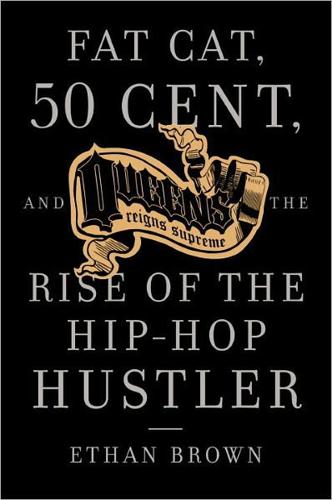
Queens Reigns Supreme: Fat Cat, 50 Cent, and the Rise of the Hip Hop Hustler
by
Ethan Brown
Published 22 Nov 2005
Released on January 15, 1985, King of Rock quickly outsold its predecessor, making RUN-DMC one of the first hip-hop acts to have a track record in the album format; at the same time, the success of the group on the road proved that hip-hop could draw arena-sized crowds. With RUN-DMC’s career taking on a historical importance in the hip-hop scene thanks to first-of-its-kind appearances at the massive benefit concert for African famine relief Live Aid and on American Bandstand and with LL Cool J’s “I Need a Beat” followed up with hits from the Beastie Boys and Jimmy Spicer, Simmons and Rubin were being courted by major labels to sign a distribution deal for Def Jam. The pair signed with CBS/Columbia during the fall of 1985 and though the label—whose roster included established R&B singers like Gladys Knight and Bill Withers—had little experience marketing hip-hop acts, few majors at the time did.
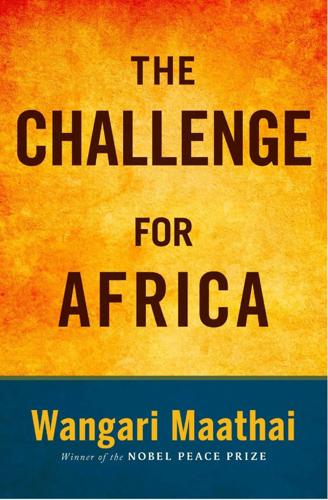
The Challenge for Africa
by
Wangari Maathai
Published 6 Apr 2009
They prick our consciences, and may move many of us, including those with money or power, to try to help. Indeed, it was pictures of this kind beamed by the BBC from Ethiopia in 1984 that so disturbed the singers Bob Geldof and Midge Ure that they wrote the pop single “Do They Know It's Christmas?” to support Ethiopian famine relief. Their efforts grew into the fund-raising concerts Live Aid and, twenty years later, Live 8. It also inspired the launch of UK-based Comic Relief, a charity dedicated to eradicating poverty in Africa and elsewhere, and with whom the Green Belt Movement works in Africa. A set of images has dominated the world's view of Africa for centuries, some intended to excuse injustice against the peoples of the continent, others to elicit compassion and wonder.
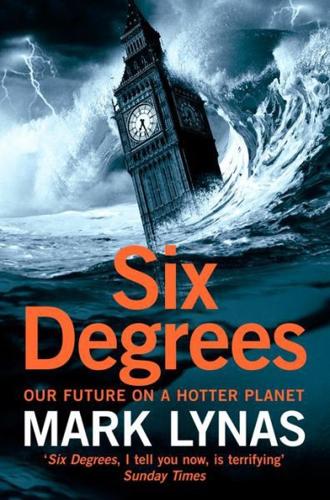
Six Degrees: Our Future on a Hotter Planet
by
Mark Lynas
Published 1 Apr 2008
Ghost rivers of the Sahara Far to the north of Kilimanjaro, in the Sahel, another drought-stricken area could by this time be experiencing some blessed relief. The Sahelian region of North Africa has long been synonymous with climatic disaster: during the 1970s and 80s famines struck the area with such severity that they sparked massive humanitarian relief efforts like Band Aid and Live Aid. Reporting from Ethiopia's refugee camps in 1984, the BBC's Michael Buerk spoke of a ‘biblical famine’ as the camera swept slowly over the dead and dying. Over 300,000 people perished during earlier famines in the 1970s. The Sahel is an immense area, stretching in a wide belt east to west across northern Africa from Senegal on the Atlantic coast to Somalia on the Indian Ocean.
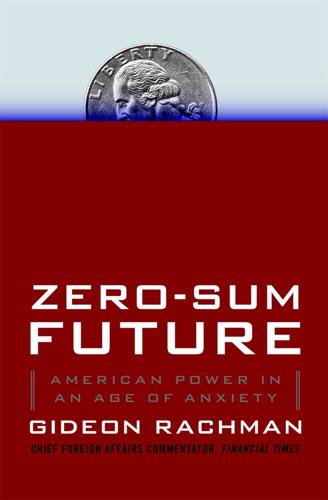
Zero-Sum Future: American Power in an Age of Anxiety
by
Gideon Rachman
Published 1 Feb 2011
Recent research has suggested that conflict is 50 percent more likely to break out in an African nation in a year in which drought has led to food shortages—further reason to fear the impact of climate change.14 Images of starvation in Africa have been familiar to Western television viewers since the mid-1980s at least, when the Live Aid concerts of 1985 mobilized popular concern about the Ethiopian famine. But for the world’s rich nations, the fate of the “bottom billion” should now provoke not just compassion, but fear. In a globalized world, the suffering of the poor is not always going to be walled off from the West. The world population is growing rapidly.

Can We Talk About Israel?: A Guide for the Curious, Confused, and Conflicted
by
Daniel Sokatch
Published 18 Oct 2021
Peres’s longtime rival for Labor leadership, Yitzhak Rabin (hero of the Six-Day War), would serve as defense minister. . . . OPERATION MOSES In the mid-1980s, a horrific famine ravaged Ethiopia, ultimately resulting in 1.2 million deaths. Images of the suffering shocked the world, including teenaged me. I was one of 1.9 billion people around the globe who watched the 1985 Live Aid concert and who donated what they could to try to end the suffering. (Still, in my opinion, the greatest act of musical social justice of all time, the concert raised tens of millions of dollars for famine relief, and Queen, in particular, put on a show for the ages.) Strange as it sounds, the famine in Ethiopia also played a significant role in my love affair with Israel.
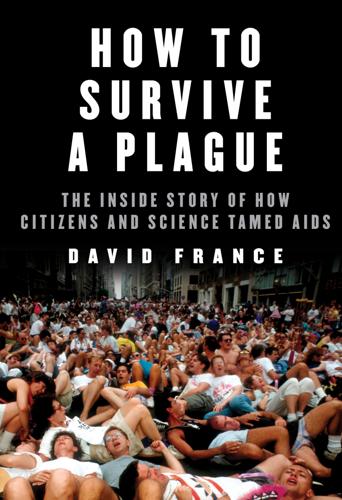
How to Survive a Plague: The Inside Story of How Citizens and Science Tamed AIDS
by
David France
Published 29 Nov 2016
Though timidly, the dominant: All by Lawrence K. Altman, “New Homosexual Disorder Worries Health Officials,” NYT, May 11, 1982; “Clue Found on Homosexuals’ Precancer Syndrome,” NYT, June 18, 1982; and “Five States Report Disorders in Haitians’ Immune Sytems.” See also David W. Dunlap, “Having Claimed 558 Lives, AIDS Finally Made It to the Front Page,” NYT, October 30, 2014. My friend Andy Mosso: Andy Mosso, email to author, January 4, 2016. Ermanno Stingo: See Ermanno J. Stingo Papers, ONE National Gay & Lesbian Archives, University of Southern California Libraries. A courtly figure: Bruce Kogan, email to author, May 13, 2013.
…
Within a few weeks: JS, email to author, March 25, 2014. Upon his return: JS, email to author, July 16, 2013. “Too embarrassing”: Intv. JS, July 28, 2009. “When I am asked”: Intv. MK, March 25, 2011. “the kingdom of the sick”: Sontag, Illness as Metaphor, 3. It took two years: David W. Dunlap, “Having Claimed 558 Lives, AIDS Finally Made It to the Front Page,” NYT, October 30, 2014. The progressive Village Voice: Stephen Harvey, “Defenseless: Learning to Live with AIDS,” VV, December 21, 1982; and James Kinsella, Covering the Plague: AIDS and the American Media (New Brunswick: Rutgers University Press, 1989), 29. I know he saw the first: NBC News did the first report, a brief piece on June 17, 1982, featuring BC images; CBS News followed with another brief BC report, on December 26, 1982.
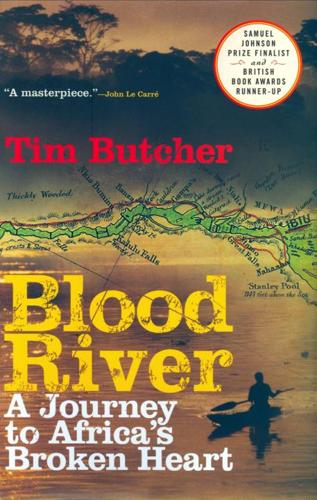
Blood River: A Journey to Africa's Broken Heart
by
Tim Butcher
Published 2 Jul 2007
The analysis was as crude as the underlying assumption: that African nations are doomed to victim status. Things had been different when I was younger. I grew up in Britain in the 1970s and collected milk-bottle tops so that my Blue Peter children's television heroes could dig wells for Kenyan villagers. My last day at school in 1985 was the day when the Live Aid concert rocked the world for victims of the Ethiopian famine. And as a student in the late 1980s I did my bit to bring down the apartheid regime in South Africa, boldly refusing to use my cashpoint card in British banks linked to the white-only government. But by the time I started working in Africa as a journalist in 2000, its patina of despair had thickened to impenetrability.
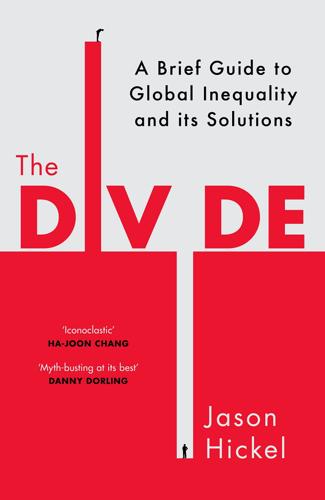
The Divide: A Brief Guide to Global Inequality and Its Solutions
by
Jason Hickel
Published 3 May 2017
We encounter it everywhere we turn: in the form of charity shops like Oxfam and Traid, in TV ads from Save the Children and World Vision, in annual reports published by the World Bank and the International Monetary Fund, and every time we see the world’s nations ranked by GDP. We hear it from rock stars like Bono and Bob Geldof, from billionaires like Bill Gates and George Soros, and from actors like Madonna and Angelina Jolie, khaki-clad and mobbed by eager African children. We get it in the form of Live Aid concerts and celebrity fundraising singles like ‘Do They Know It’s Christmas?’, which somehow manages to crop up every year. Every major university offers degree programmes in development, and a whole class of professionals has emerged to staff the thousands of NGOs that have sprung up over the past few decades.
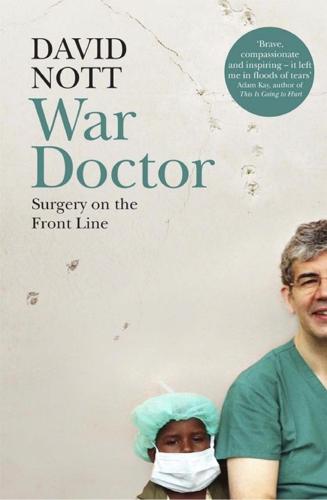
War Doctor: Surgery on the Front Line
by
David Nott
Published 21 Feb 2019
Many countries are riven with civil war because colonial national boundaries were drawn with little regard for local ethnic or tribal history, and the ‘strongman’ in Africa developed an often justifiable reputation for greed and corruption. Every now and then the West does sit up and take notice of Africa and its problems – perhaps most famously as a result of the reporting of the unfolding famine in Ethiopia in 1984, which led to the Band Aid, Live Aid and USA for Africa charity initiatives, raising millions of pounds. Some twenty years later the conscience of the West was pricked again, this time by a growing humanitarian disaster in a province in the west of Sudan known as Darfur. Sudan is enormous, covering a million square miles from its Red Sea coastline in the east to the vast desert wastes of the Sahara in the north and west of the country.

The Hidden Globe: How Wealth Hacks the World
by
Atossa Araxia Abrahamian
Published 7 Oct 2024
Among them were Felix Cohen, a lawyer at the Department of the Interior who became well known for his advocacy on behalf of Native American tribal sovereignty, and his colleague Nathan Margold, who in the 1930s was a staff attorney for the NAACP when the civil rights organization challenged the segregationist “separate but equal” doctrine. Samuel Grafton was born Samuel Lipshutz to immigrants of Lithuanian origin. The Popular Front, an anti-fascist group of illustrators, writers, and actors, also took up the cause. The artists even put on a proto–Live Aid “concert and drama dedicated to free ports for refugees” at Manhattan’s Town Hall, with appearances by Paul Robeson, Sam Jaffe, and Canada Lee. Xenophobic neoliberal anti-Semites they were not. On the legal side of things, advocates on President Roosevelt’s newly launched War Refugee Board (WRB) had been handed the impossible task of figuring out where to put displaced people whom nobody seemed to want around.
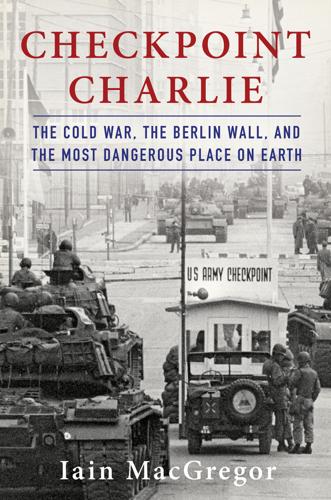
Checkpoint Charlie
by
Iain MacGregor
Published 5 Nov 2019
Afterward, a Stasi report complained that the country had been double-crossed by the western authorities but that a wind traveling from east to west had mitigated much of the effect. At the very least, it all illustrated there was a huge appetite in East Germany for the kind of large-scale gigs that now occurred regularly around the globe since the heady days of Bob Geldof’s all-day concert to raise money for famine relief in Africa, Live Aid. That event had signaled to many governments and politicians the power of popular music to reach a global audience, and how if promoted correctly it could shed light on causes, people, and perhaps even countries. The Tunnel of Love Express tour wasn’t in the tradition of Bruce’s previous tours of visiting numerous cities and venues across many months.
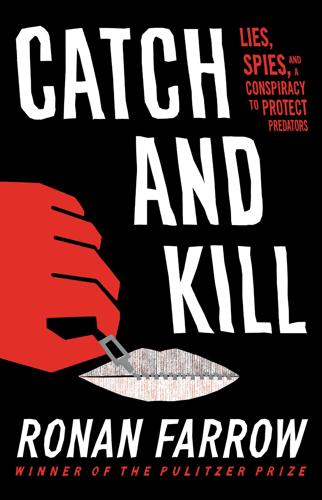
Catch and Kill: Lies, Spies, and a Conspiracy to Protect Predators
by
Ronan Farrow
Published 14 Oct 2019
And when you subjected him to any kind of rigorous discussion of reporting, he’d squint at you and look confused. But Griffin did become passionate when a business interest was on the line. Once, while I was co-hosting a charity concert called the Global Citizen Festival—a big, earnest, low-rent Live Aid—I interviewed the concert’s headline act, No Doubt. One of the festival’s goals that year was promoting vaccination, even as the anti-vaxxer movement in the United States was producing adherents and measles outbreaks. I asked Gwen Stefani if she vaccinated her kids, and how she felt about the anti-vaxxers.
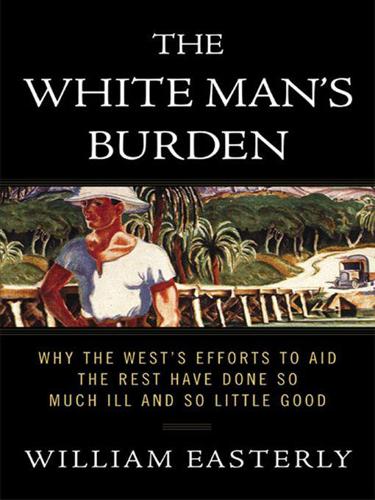
The White Man's Burden: Why the West's Efforts to Aid the Rest Have Done So Much Ill and So Little Good
by
William Easterly
Published 1 Mar 2006
Gordon Brown and Tony Blair put the cause of ending poverty in Africa at the top of the agenda of the G8 Summit in Scotland in July 2005. Bob Geldof assembled well-known bands for “Live 8” concerts on July 2, 2005, to lobby the G8 leaders to “Make Poverty History” in Africa. Veterans of the 1985 Live Aid concert, such as Elton John and Madonna, performed, as did a younger generation’s bands, such as Coldplay. Hundreds of thousands marched on the G8 Summit for the cause. Live 8’s appeals for helping the poor and its dramatizations of their sufferings were moving, and it is great that rock stars donate their time for the needy and desperate.

The Rough Guide to Prague
by
Humphreys, Rob
The 1980s In the late 1970s and early 1980s, the inefficiencies of the economy prevented the government from fulfilling its side of the social contract, as living standards began to fall. Cynicism, alcoholism, absenteeism and outright dissent became widespread, especially among the younger (post-1968) generation. The Jazz Section of the Musicians’ Union, who disseminated “subversive” Western pop music (such as pirate copies of “Live Aid”), highlighted the ludicrously harsh nature of the regime when they were arrested and imprisoned in the mid-1980s. Pop concerts, religious pilgrimages and, of course, the anniversary of the Soviet invasion all caused regular confrontations between the security forces and certain sections of the population.
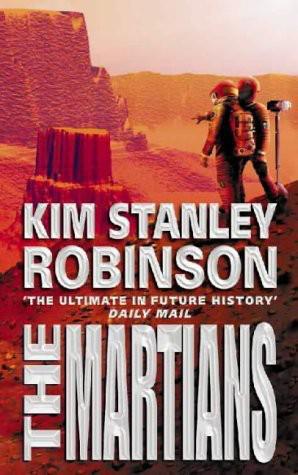
Martians
by
Kim Stanley Robinson
Published 6 Jul 1999
INVISIBLE OWLS I remember our night on the ridge I had seen a nook some years before Flat sand and shrubs in broken granite Right on the crest so I thought I could find it And you were game for anything We hiked up in late afternoon Carrying water in our packs Up in the shadow of the Crystal Range Up shattered granite all patched with grasses Until we stepped back into the light We found the nook and pitched the tent Between two gnarly junipers The sun set in the big valley's haze The light leaked out of the sky We leaned against rock cooking our supper And in the last electric blue The richest color in all the world We jerked at a flash in the air above And jerked again as out of the night Black shapes dove at both our heads In the dark we could barely see them Their quick dives made no sound at all Too big for bats too quiet for hawks We ducked it seemed at an onslaught of owls Out hunting in a little pack A strange disjunction of the senses Wings baffled to damp their noise So we heard nothing except the stove Yet saw the steep black strobe approaches The braking the sharp glides turning away Then one came close we sensed the talons I picked up the stove and held it aloft A Bluet canister with blue flames burning Bright in the dark blue expanse of space Beyond it black wings flitting away We laughed with just a touch of a shiver Actually to be considered as food Above the stars popped out all over Netted in the Milky Way And afterimages of blue flame Then we lay in our blue tent The moon rose and our air turned blue A blue still in us It will always be with us All the color of the twilight sky All the time and space we travel The years pass so many now Falling asleep owls twirl overhead I feel the granite under our bodies We soar in blue without a sound TENZING Tenzing did not speak much English Hungry food tired rest Paragraphs from a power in the land Teahouse to teahouse he led us Across land scored deep Rivers in mountains no end to them He arranged our food He arranged our sleep He showed us the way Up the gorge of the Dudh Khosi Green leaves leeches everything wet Always within the monsoon clouds One evening they cleared and there Above the peaks above the clouds Another range above the world We walked up there Namche Bazaar perched in space Thyangboche Pengboche Pheriche Up glacier canyons up their walls Over ice and rock to Gorak Shep Dead Crow the last teahouse Dawn struggle up Kala Pattar Sit on the peak necks craned up To look at Everest Massive slab bright in the sky Sargarmatha Chomolungma Mother Goddess of the World Tenzing pointed at South Col Fabled last camp littered with gear Terrible stories corpses Tenzing had been there four times Portering up and down Khumbu Icefall The sidewalk over the white abyss Where any moment the world could crash And end it all a place in other words Like any other place we stand Beside Tenzing we do not yet know The world and the icefall are the same We see it in his face's Himalaya Gleaming like ice in the sun Windy he said South Col very windy He was fifty-four Later that morning Lisa got sick He led her down by the hand Offering tea sips of water And brought us down to Pheriche Helped run the teahouse while Lisa recovered Helped the Sherpani who cooked all day Led us to the ancient monastery Showed us the wall of demon masks Took us to Thyangboche in the rain Made sure we saw the monks' mandala Five men in red sitting and laughing Over a circle of colored sands Rubbing funnels with sticks To free trickles of red green yellow blue Intent then a joke and we three Sitting with them through a dark rainy day We sit there still in some inner space He led us back down into the world Down to Namche down down to Lukla The little airstrip hacked into the wall Of the gorge an outpost of everything Led us into the Sherpa Co-op at dusk Everyone in there watching TV Powered by the Honda generator out back A video of the Live Aid concert Everyone stunned at the sight Of Ozzy Osborne chewing up the stage Tenzing the man who led us Who took care of us who taught us Finished eating and crossed the room Crouched beside me gestured at the TV America? he said No I said no that's England A REPORT ON THE FIRST RECORDED CASE OF AEROPHACY for Terry Bisson On my forty-third birthday I was nearly done With Mars the drafts were in a shambles Beauty in a novel (as in everything) is An emergent property emerging Late in the process and before that all Is chaos and disorder but my hopes Were high I felt that it was coming Together I wanted the final push to be The convergence of everything I wanted Unreasonable things I had in my possession Some bits of Mars a gram or two of the SNC Meteorite that fell on Zagama Nigeria In October of 1962 after thirteen million years In space little gray chunks of rock Mounted in a necklace given to my wife I unscrewed the casing took out a chunk Climbed onto my roof at sunset A clear day crows flying back From the fields the coastal range dark To the west gilt clouds above it The vault still blue the wind fresh From the delta and there I was On the roofbeam of my house in the middle of My life in the open air about to eat a rock That if not fraudulent a piece of Jersey Was an actual chunk of the next planet out It felt odd even in the performance I have never been able to explain Myself but can only note that in the Attempt to imagine Mars I came to see Earth more clearly than ever before This beautiful world now alive With the drama of an everyday sunset Black birds sailing east in lines Under my feet my home the sun Touching the coastal range I put the rock in My mouth all went on as before No electric shiver that the sunset itself did not Provide no speaking in tongues I bit down It was too hard to break in my mouth Tongued it side to side tasted no taste Ran it over my teeth a little rock Most of it would pass through me But the stomach's fierce acids would Surely tear at the surface of the rock And some few atoms I hoped would stick As carbon incorporated into my bones For their seven-year cycle or For good perhaps and so I sat Digesting Mars and the view the sun Ablink through the Berryessa gap The wind rising each life has its trajectory Up and down in the shimmer of ordinary moments Sudden euphoria stab of grief the pattern dustdevil Funneling down spiraling up in most Exquisite sensitive dependence On unknown factors that dusk nothing of the sort Happened it was a matter of will a Meditative discipline exerted day after Day for years to make a world Transparent in me and my mind at home And as I swallowed parts of another world This one wheeled about me like a veritable California THE REDS' LAMENT They never got it right not any of them not ever never on Earth by definition nor hardly ever on Mars itself the way it was back in the beginning the way it was before we changed it The way the sky went red at dawn the way it felt to wake under the sun light in the self rock under boot .38 g even in our dreams and in our hopes for our children The way the way always came clear even in the worst of the gimcrack chaos Ariadne's thread appearing or not in the peripheral moment lost lost then found and walking on a sidewalk through the shattered land The way so much of it had to be inferred through the suits we walked in cut off from the touch of the world we watched like pilgrims in love from afar alight with fire in the body itself felt as a world the mind apulse in a living wire of thought tungsten in darkness the person as planet the surface of Mars the inside of our souls aware each to each and all to all The way we knew the way had changed and never again would remain the same long enough for us to understand it The way the place was just there the way you were just thinking stone there The way everything we thought we knew in the sky fell away and left us standing in the visible world patterned by wind to a horizon you could almost touch a little prince on a little world looking for The way the stars shone at noon on the flanks of the big volcanoes poking through the sky itself out into space we walked in space and on the sand at once and knew we knew we were not at home the way We always knew we were not at home we are visitors on this planet the Dalai Lama said on Earth we are here a century at most and during that time we must try to do something good something useful The way the Buddha did with our lives the way on Mars we always knew this always saw it in the bare face of the land under us the spur and gully shapes of our lives all bare of ornamentation red rock red dust the bare mineral here of now and we the animals standing in it TWO YEARS We were brothers in those days you and I Mom off to work ten hours a day No child care no friends no family So off we went on our merry way To a nearby park walled by city streets Where Jamaican nannies watched us play One eye on their charges all stunned by the heat Kids here and there mom following daughter Me following you so cautious and neat Hands gripped as you rose on the teeter-totter Intent as you stepped on the bouncy bridge Then tossed your head back burbling laughter When you reached solid ground and stood on the edge Looking back at the span you had crossed without falling Plop on the grass to eat our first lunch You tease as we eat your laughter upwelling Pretend to refuse your apple juice Knock it aside and laugh at its spilling And laugh again at the flight of a bluejay Off to used bookstores' dim musty aisles Retrieving the books you have pulled out and used To toss on the ground and collect people's smiles Until I stop you and you throw a fit And so into the backpack off hiking for miles Your forehead snug on the back of my neck Home then to microwave Mom's frozen milk So that when you wake ravenous for it I'll have tested the temperature with a lick And can lay you out in my elbow's nook And watch you suck to the last squick squick And then you nap again I write my book And for an hour I am on Mars Or sitting at my desk lost in thought as I look Down at the perpetual parade of cars Your cry wakes us both from this dream And we're back at it the movement of the stars No more regular than our routine Untellable tedium not just the diapers The spooning of food the screams But also the weekly pass of the street sweeper The hours together playing with blocks I set them up you knock them down nothing neater And all the time you learning to talk Glossolalia peppered with names Simple statements firm orders Let go walk Telling me to do things a game That made you laugh also knowing When things were in different ways the same Blue truck blue sky your face glowing With delight as your language grew Till description became a kind of telling Power I spit out the sun I sky the blue Sitting in that living room together Each in his own world surprised by new Things spaced out lost to each other Used to each other like Siamese twins Confined to the house by steamy weather Me watching volleyball on ESPN Listening to Beethoven reading the Post You moving your trucks around babbling when You felt like it absorbed focused lost In your own space so fully that watching you I forgot my many selves collapsed to one and was most Happy the past is gone David I asked beloved of God do you remember Bethesda The way my mother would have Asked me Do you remember Zion And David looked at me curiously and said No Dad not really I know how the house looked but all That comes from pictures in Mom's albums you know Yes my first memory is not of Zion but California the Christmas I was three a brown Trike put together by my dad next to the tree but My dad tells me he bought the trike assembled How can we say what did or did not Happen David watching you I tremble You know the world are sophisticated You say you do not remember That time and now you know so much of hate Of anguish of death Will you ever again be so elated By the sight of swans swimming under the wharf Shrieking with laughter as they dove for tossed bread I hope we are these moments deeper than self Deeper than memory always connected Inside each other hoping This helps hope stave off dread Brother of mine boy receding I will try to remember for us The time when you could be so purely happy I SAY GOOD-BYE TO MARS Hiking alone in the Sierra Nevada I stopped one evening in Dragon Basin Above treeline by a small stream Trickling down a flaw in the granite On the floor of this crack were Lush little lawns green moss Furring the banks krummholz bonsai Clustering over low black falls Transparent water glossed on top Standing there I looked Over the fellfield basin a cupped Hand of stone catching rocks Inlaid with a tapestry of plants Lichen sedge and saxifrage Tippling green the pebble all bare Under jagged ridges splintering the sky Beside the rill I made my camp Ground cloth foam pad sleeping bag Pack for a pillow stove at my feet In the failing light my dinner steaming To the gurgle of water and the sky And the stars popping into existence Over the crest of the range still Alpenglow pink spiking indigo The line between the colors pulsing As they faded to two shades of black the number Of stars amazing the Milky Way perfectly Articulating my fall up and into sleep And was never tired Dreamed the same dreams And heard the rockslides rattle and thunder In the throats of these living mountains Something woke me I put on my glasses I lay looking up at stars and the Perseids Meteors darting across the starry black Every few heartbeats every direction Fast slow long short far near White or some a shade of red some Seeming to hiss slow down break up Firing great sparks away to the sides In their wakes I watched held by granite Entrained to a meteor shower beyond Any I had imagined possible the stars Still fixed in their places lighting The great shattered granite walls Of the basin all pale witness Together to fireworks one Plowing the air right over the peaks Fizzing sparks over Fin Dome One shot down just overhead Wow I cried and sat up to look As a great BOOM knocked me into A dark land sparked by fire Fires burning My God I cried oh my God oh my God Struggling to get out of bag into boots On my feet out stumbling around a smell Like autumn leaves burning the past I took up my water bag and crashed about Quenching fires that reignited As I ran to the next oh my God And ran to the stream and stopped thinking That here was the action of my life Putting out fires where there was no wood Vision crisscrossed with afterimages Of the final fall green bolts In every blink of the eye finally I stood in the dark understanding There was no need to hurry I came to a chunk of vivid orange A stone standing alone on a slab A meteorite still glowing with heat I sat down before it I calmed my breathing Cross-legged I watched it glow I put my hand out to it I could feel its heat some distance Away the pure color of fire Films feathering on its surface Incandescent in the night Illuminating the glacial polish Of the slab reflecting in that black Mirror the night quiet the air still Slightly smoky the stars again Fixed in their places the meteor Shower past its peak the stream Chuckling as it had all along Oblivious to the life in the sky A companion of sorts as I watched The burning visitation warm My hands as it filmed over Darkening in its orange Brilliance until it was both orange And black I went to get my sleeping Bag to drape me in my vigil Sleep gone again so many nights Like that but this time justified by My visitor cooling aglow black flakes Crusting over growing Orange darker underneath The moon rose over the jagged peaks Bathed the basin in its cool light Flecked the water in the stream Dark air holding invisible light The meteorite now black over orange Still warm still the center Of all that basin dark on its slab Of polished pale granite In the dawn the rock was purest black Of course I took it home with me And put it on mantelpiece as a Memento of that night and a mark Of where we stand in the world but I will always remember how it felt The night it shot down out of the sky And it glowed orange as I sat beside it And it warmed me like a little sun Purple Mars He crawls out of troubled dreams half-stunned and begging for coffee.
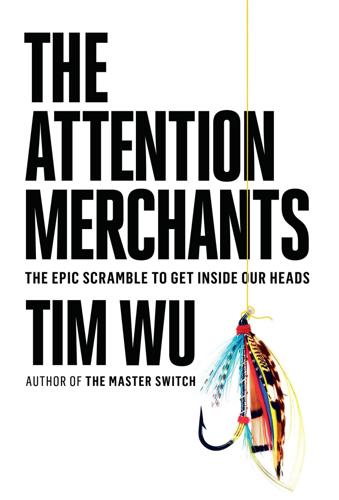
The Attention Merchants: The Epic Scramble to Get Inside Our Heads
by
Tim Wu
Published 14 May 2016
While many people were probably drawn to the same idea, in 1994 a British producer named Charlie Parsons pitched the idea of mixing The Real World’s documentary format with a 1950s game show structure and dramatic competition. The idea was called, fittingly, a “documentary game show.” As part of a production team, including Bob Geldof, onetime lead singer of the Boomtown Rats and later the founder of Live Aid, Parsons pitched the new format to Swedish public television. Originally named Castaway and later Expedition Robinson, the show, set on a remote desert island, staged an ongoing physical competition under constant surveillance. The sixteen contestants were divided into two “tribes,” who would live on the island for about a month; at the end of each episode, one player would be voted off the island by the others.19 The show was a hit in Sweden, and when Parsons sold it elsewhere it was renamed Survivor.

Apocalypse Never: Why Environmental Alarmism Hurts Us All
by
Michael Shellenberger
Published 28 Jun 2020
“Billions of people are going to die.” “Life on Earth is dying.” And, “Governments aren’t addressing it.”2 By 2019, Extinction Rebellion had attracted the support of leading celebrities, including actors Benedict Cumberbatch and Stephen Fry, pop stars Ellie Goulding and Thom Yorke, 2019 Oscar-winning actress Olivia Colman, Live Aid producer Bob Geldof, and Spice Girl Mel B. While Extinction Rebellion may not have been representative of all environmentalists, nearly half of Britons surveyed told pollsters they supported the group.3 And the British were not alone. In September 2019, a survey of thirty thousand people around the world found that 48 percent believed climate change would make humanity extinct.4 But by the fall of that same year, public support for Extinction Rebellion, including the sympathy of journalists, rapidly declined after the organization shut down streets and public transit throughout London.
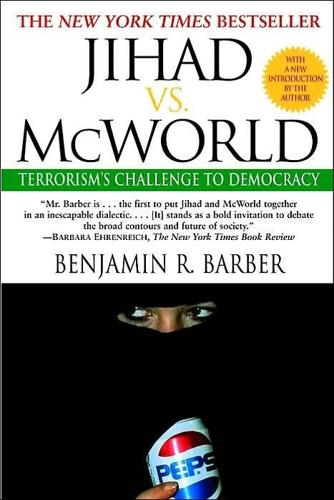
Jihad vs. McWorld: Terrorism's Challenge to Democracy
by
Benjamin Barber
Published 20 Apr 2010
More liminally, it engages in shallow but pervasive political campaigns that are vaguely liberal and empowering though often countercultural and sometimes even scandalizing (as with black rap and hip-hop), but finally as vapid as the vacuously tendentious lyrics of its most scandalous songs.22 “Rock the vote,” it shouts, wrapping Madonna in a flag and urging youth to register. Live Aid, Free Your Mind, Choose or Lose—rock musicians flexing underdeveloped political muscles in the name of causes so safe and universal that the campaigns can do little harm though scarcely much good either. Political content, to be sure, is hardly a matter of carefully deliberated principle on MTV; more a question of aesthetics, taste—call it hip-hop whimsy.
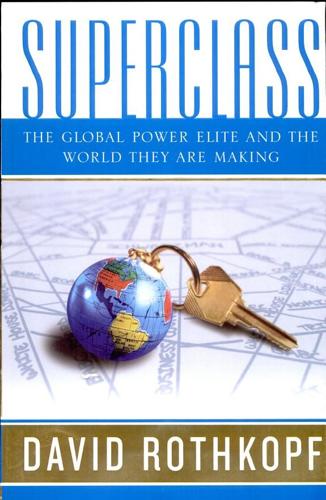
Superclass: The Global Power Elite and the World They Are Making
by
David Rothkopf
Published 18 Mar 2008
Bono, for one, has been a whirlwind in recent years, guest editing an issue of Vanity Fair on Africa, creating programs to raise awareness through highly identifiable “red” products that raise money for African causes, and pressing government leaders for debt relief for developing nations. Geldof has done likewise, helping to organize massive worldwide concerts like the Live Aid events, which harnessed the power of multiple pop stars to bring attention to the plight of the world’s poorest. How informed are these celebrity ambassadors? Are entertainers suited for policy work and grounded in the substance of the issues? Said one former top official of a multilateral development agency, “I’ve seen these guys in action and their commitment is impressive.

Thank You for Being Late: An Optimist's Guide to Thriving in the Age of Accelerations
by
Thomas L. Friedman
Published 22 Nov 2016
Here and elsewhere, desertification acts as the trigger; climate change and population growth act as amplifiers; interethnic and tribal conflicts are the political by-product, and WhatsApp provides both an alluring picture of where things might be better—Europe—and a cheap tool for hopping a migration caravan to get there. “In the old days,” says Barbut, “we could just give them a Live Aid concert in Europe or America and then forget about them. But that won’t work anymore. They won’t settle for that. And the problem is now too big.” No walls will permanently hold them back. I interviewed twenty men from at least ten African countries at the International Organization for Migration aid center in Agadez—all had gone to Libya, tried and failed to get to Europe, and returned, but were penniless and unable to get back to their home villages.
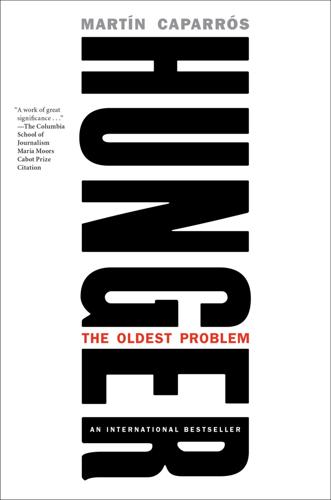
Hunger: The Oldest Problem
by
Martin Caparros
Published 14 Jan 2020
So he didn’t say anything—and he rejected aid being offered to him by organizations and NGOs, insisting it wasn’t necessary. When there was no longer any choice but to admit what was happening, a million people had already died. There were campaigns, festivals, collections for Ethiopia. A new personality then joined these campaigns: Bob Geldof, Bono, and Live Aid; that’s when the conscientious rock star was invented, our current version of a Voltairean intellectual, a person who takes advantage of the fame they have achieved through a cultural endeavor to help the disadvantaged. And, in this case, a person who doesn’t propose to change the global system but rather to use their access to it, a person who hangs out with the nice powerful people in the world to support his cause—because his cause doesn’t question those powerful.
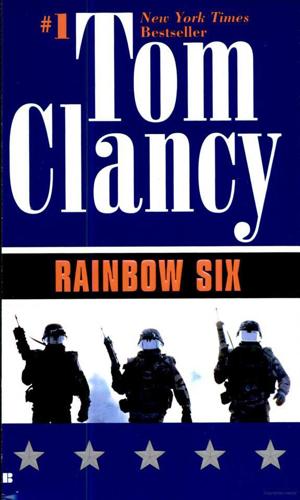
Rainbow Six
by
Tom Clancy
Published 2 Jan 1998
He pulled down the three-inch thick door, locked it in place, and punched the ignition button. He could hear the gas jetting it and lighting off from the sparkler things inside, followed by the usual voosh. There was nothing unusual about this. Horizon Corporation was always disposing of biological material of one sort or another. Maybe it was live AIDS virus, he thought. The company did a lot of work in that area, he'd read. But for the moment he looked at the papers on his clipboard. Three sheets of paper from the special order that had been faxed in from Kansas, and every line was checked off. All the containers specified were now ashes. Hell, this incinerator even destroyed the metal lids.
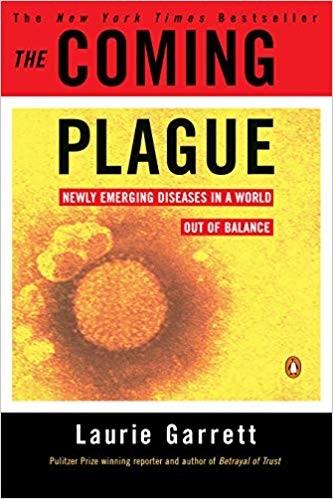
The Coming Plague: Newly Emerging Diseases in a World Out of Balance
by
Laurie Garrett
Published 31 Oct 1994
As had happened in the American Midwest during the 1930s, overfarming was producing dust bowls, rendering the once fertile, feral lands nonarable wastelands.130 But African leaders knew that the world wasn’t much interested in their drought and famine. The crisis began in the late 1970s, but drew little global interest until 1985, when African journalists finally managed to get film of the Ethiopian disaster broadcast on British television and a group of rock-and-roll performers subsequently staged a seventeen-hour benefit concert, called “Live Aid,” that was simulcast in 152 countries, raising $70 million for African relief. African leaders were less than pleased about the attention their AIDS situation was garnering, particularly as they had no idea exactly how serious it really was. Few, if any, of them believed in 1985 that AIDS could possibly match the severity of the drought and famine, or of the region’s malaria epidemic, or of its general economic woes.